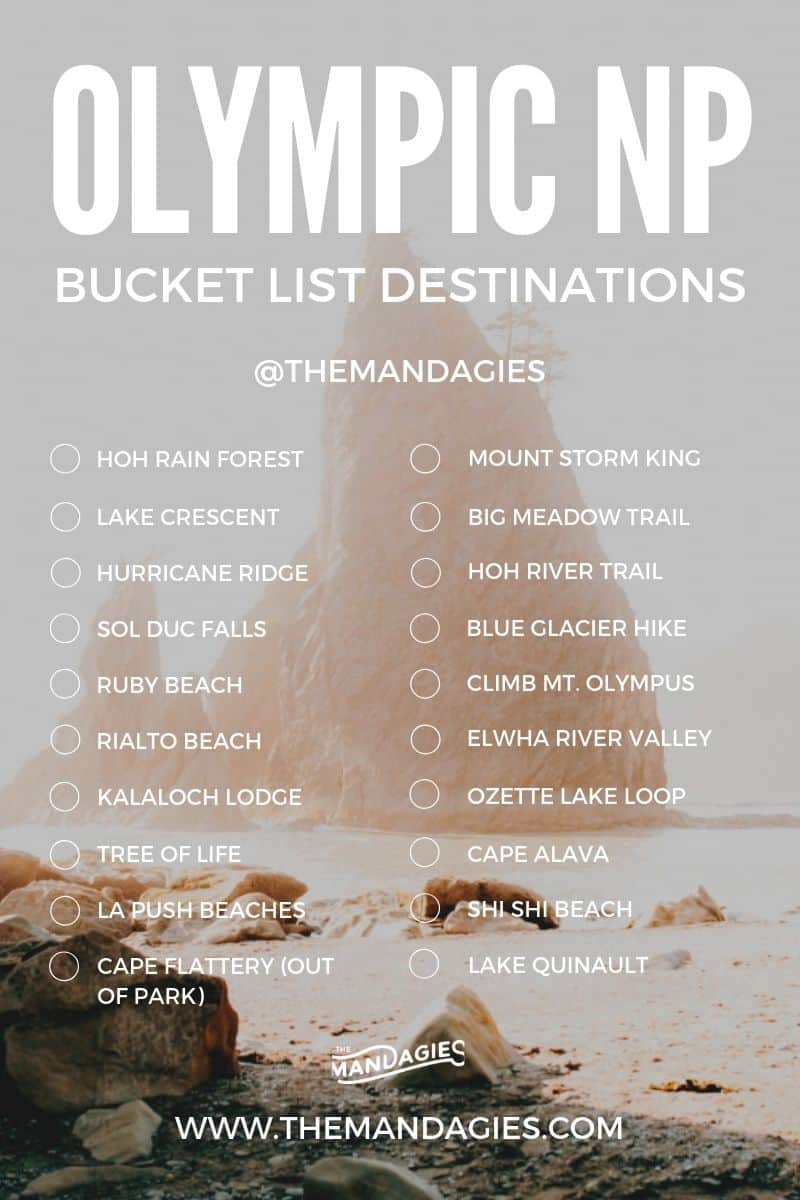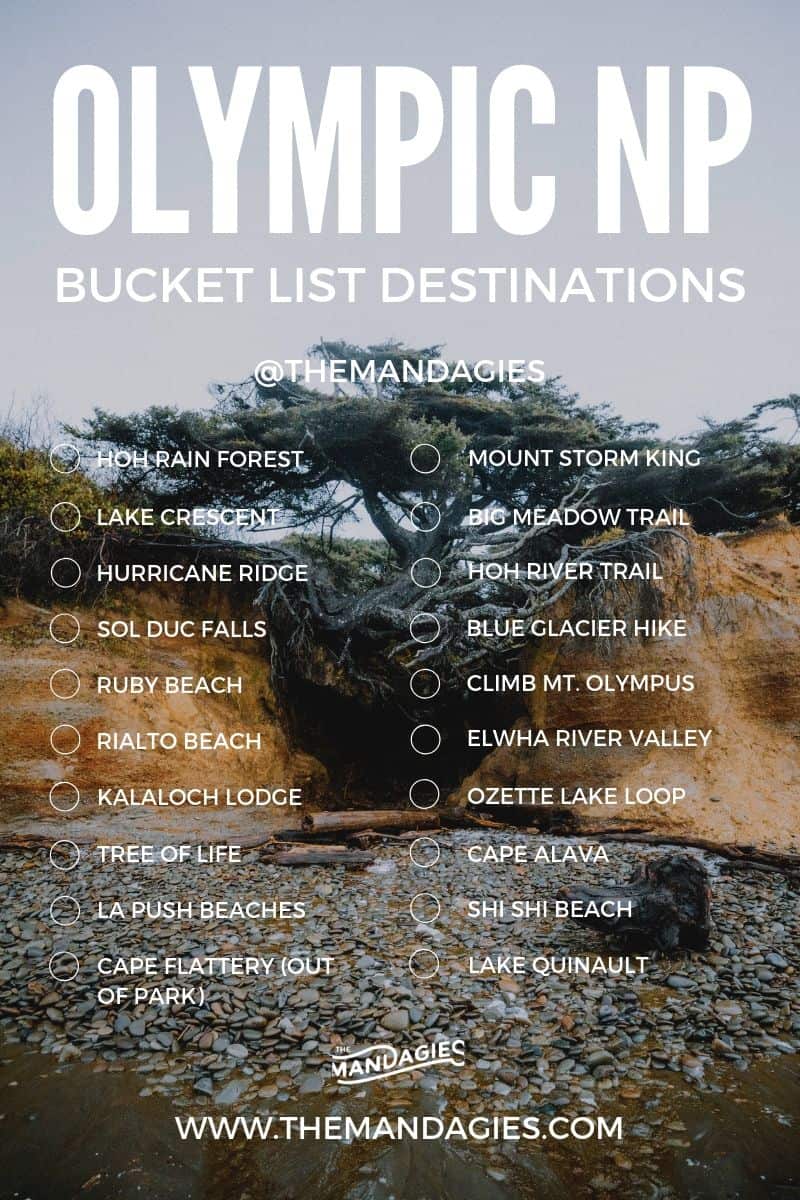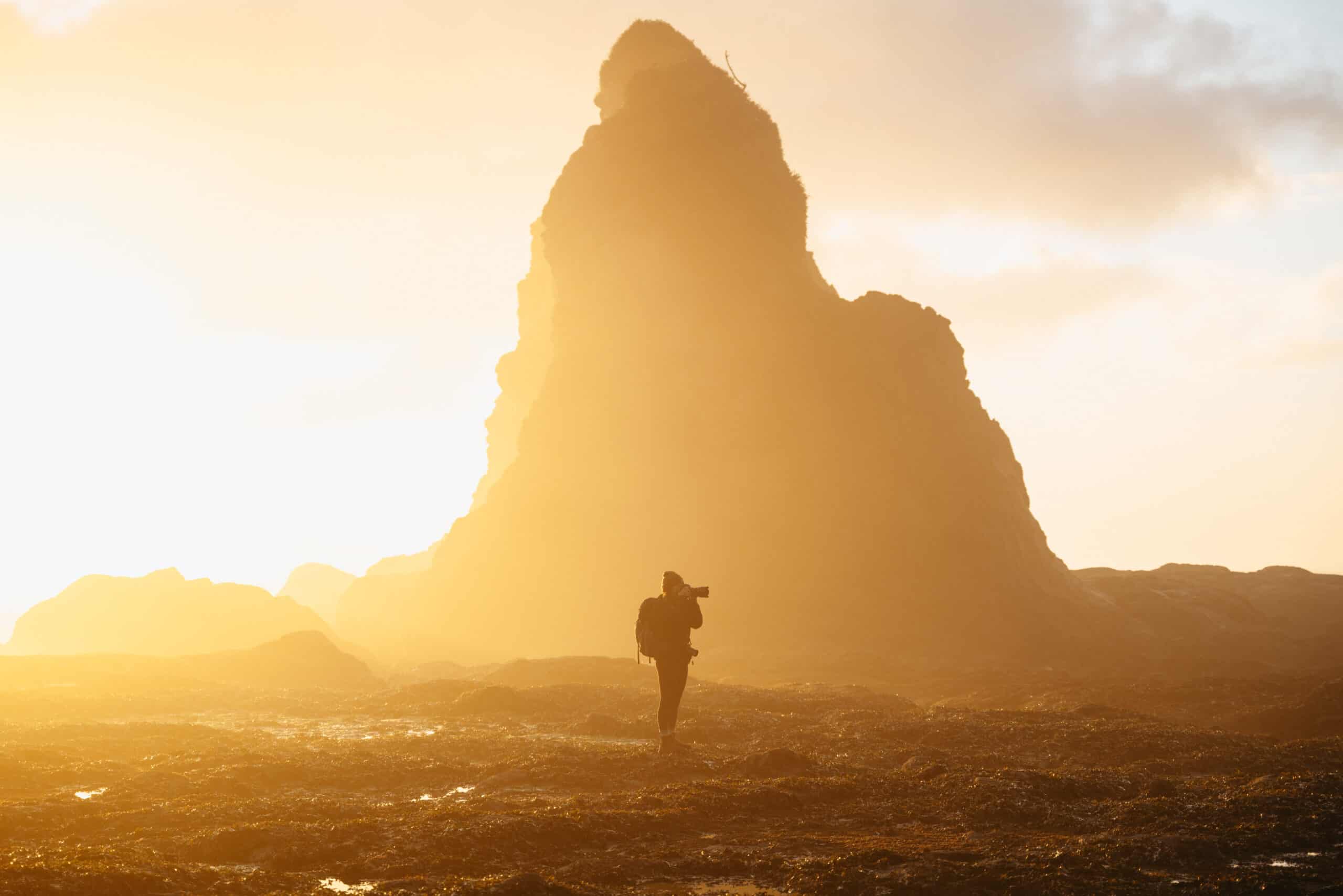Berty and I are no strangers to Olympic National Park photography. In fact, we’ve been photographing this area for almost 10 years now!
The Olympic National Park has a little bit of everything: ocean shores, rainforests, lakes, mountains, and waterfalls…you can’t go wrong on a photography trip!
If you are interested in going there yourself to capture stunning images, you’re in the right place.
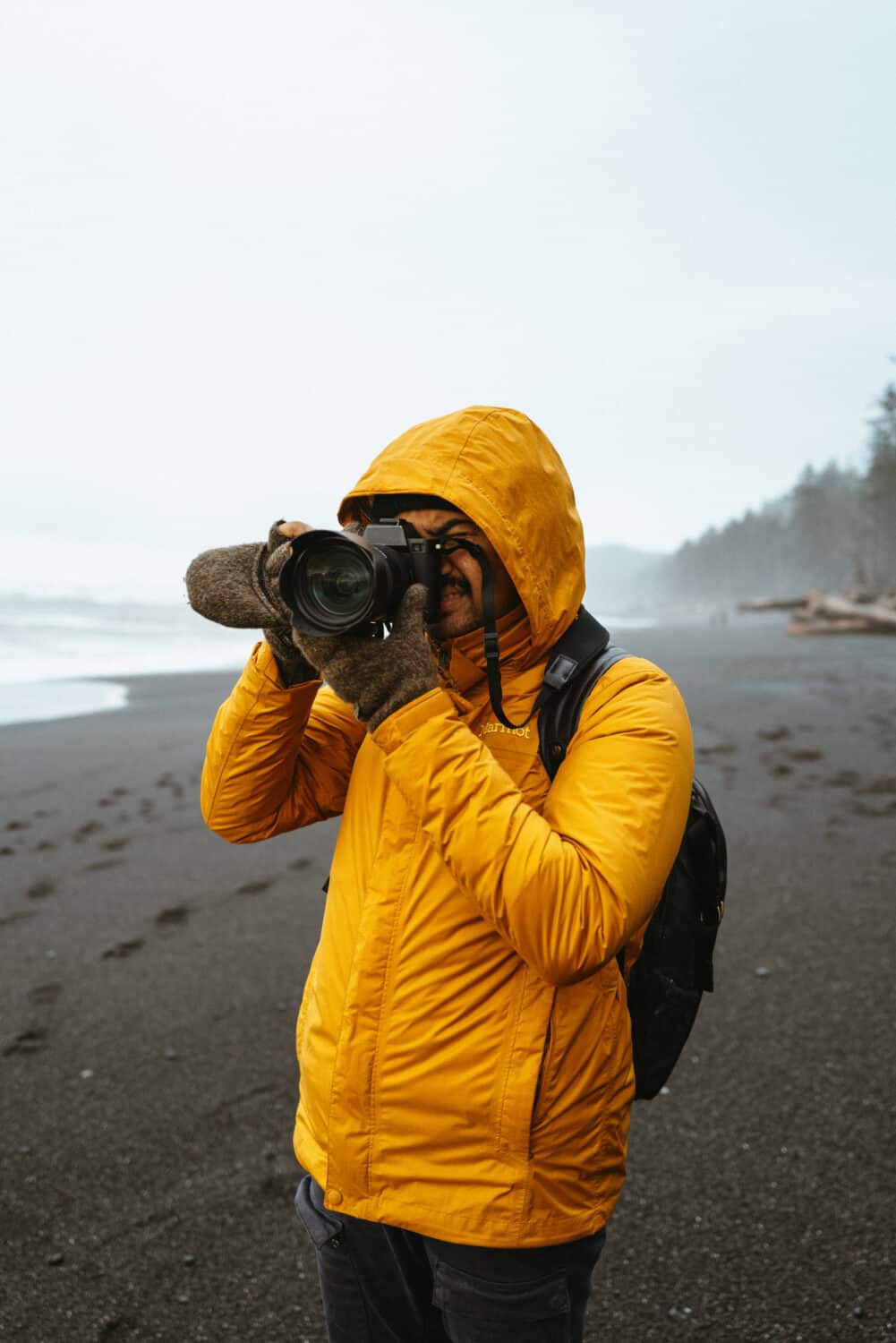
We’ve put together this Olympic National Park photography guide of the best locations, how to get around, and tips to prepare you for the journey.
Let’s go!
The Complete Olympic National Park Photography Guide
- The Complete Olympic National Park Photography Guide
- When to Visit Olympic National Park
- Camera Gear To Bring
- How To Get Around Olympic National Park
- Where to Stay in Olympic National Park
- The Best Places To See In Olympic National Park (LIST)
- 1. Port Angeles
- 2. Lake Crescent
- 3. Hurricane Ridge
- 4. Marymere Falls
- 5. Madison Falls
- 6. Sol Duc Falls
- 7. Clallam Bay
- 8. Cape Flattery
- 9. Twilight Tour Stops
- 10. First Beach
- 11. Second Beach
- 12. Rialto Beach
- 13. Ruby Beach
- 14. Kalaloch Lodge and The Tree Of Life
- 15. Hoh Rainforest – Hall of Mosses Trail
- 16. The Quinault Rainforest
- 17. The Staircase Area
- 18. Lake Cushman
- 19. Ocean Shores, WA
- Map of Olympic National Park Photography Spots
- READ MORE PNW POSTS
When to Visit Olympic National Park
So, what is the best time to visit Olympic National Park if you want to capture some amazing photos?
Honestly, the park provides interest all year round but depending on the type of photography you want to capture. Here are some of our season tips for visiting the Olympic Peninsula:
Summer (June, July, August)
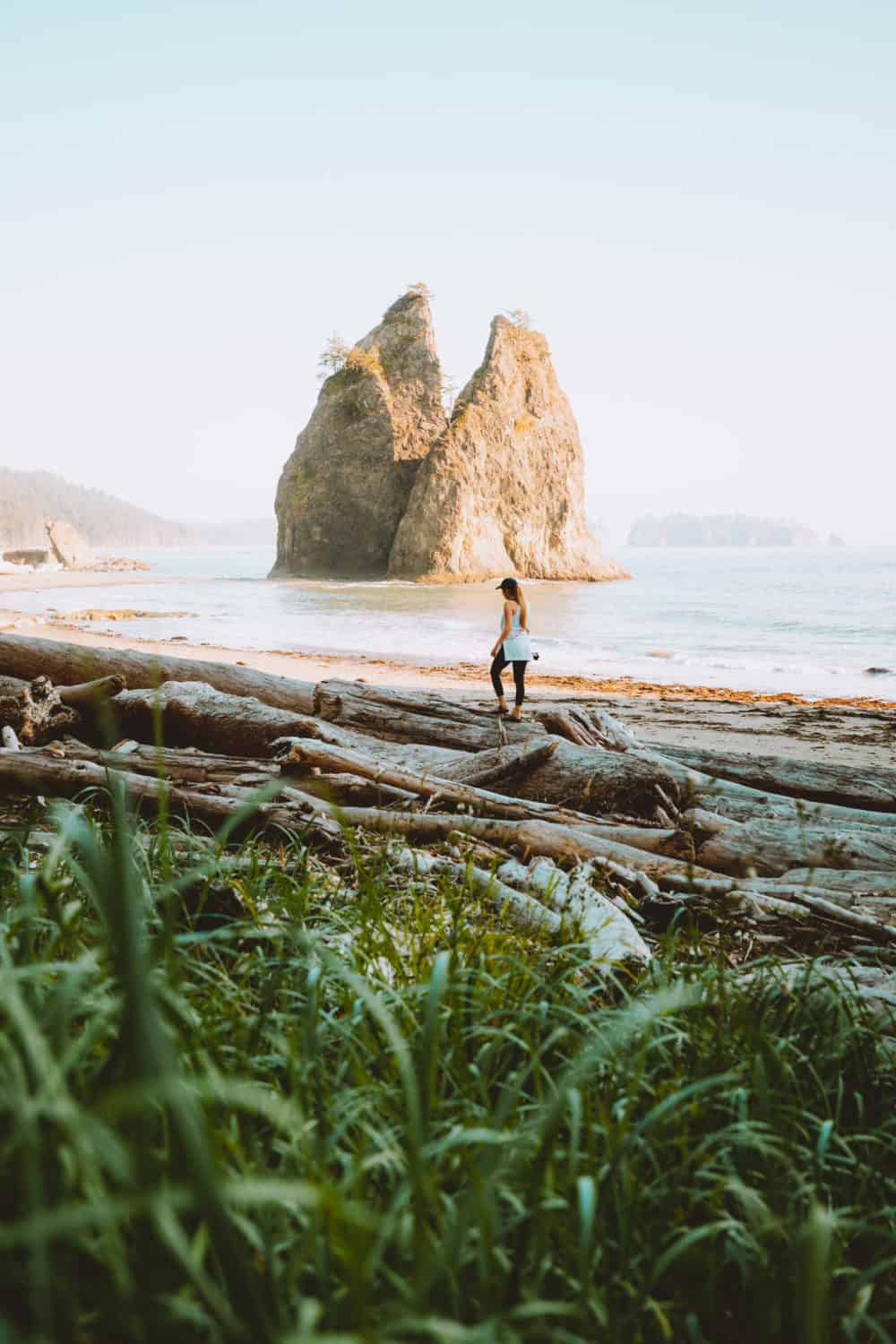
Summer is easily one of the best times to visit the park. Not only is everything open, but the weather is nice, and the rainy days are fewer. You can expect daily highs around 65-80 degrees, and lows in the 40s.
With the weather being nice, this is also the most crowded time of year. Come with patience, and arrive at trailheads early in the morning if you really want to snag a spot.
Fall (September, October, November)
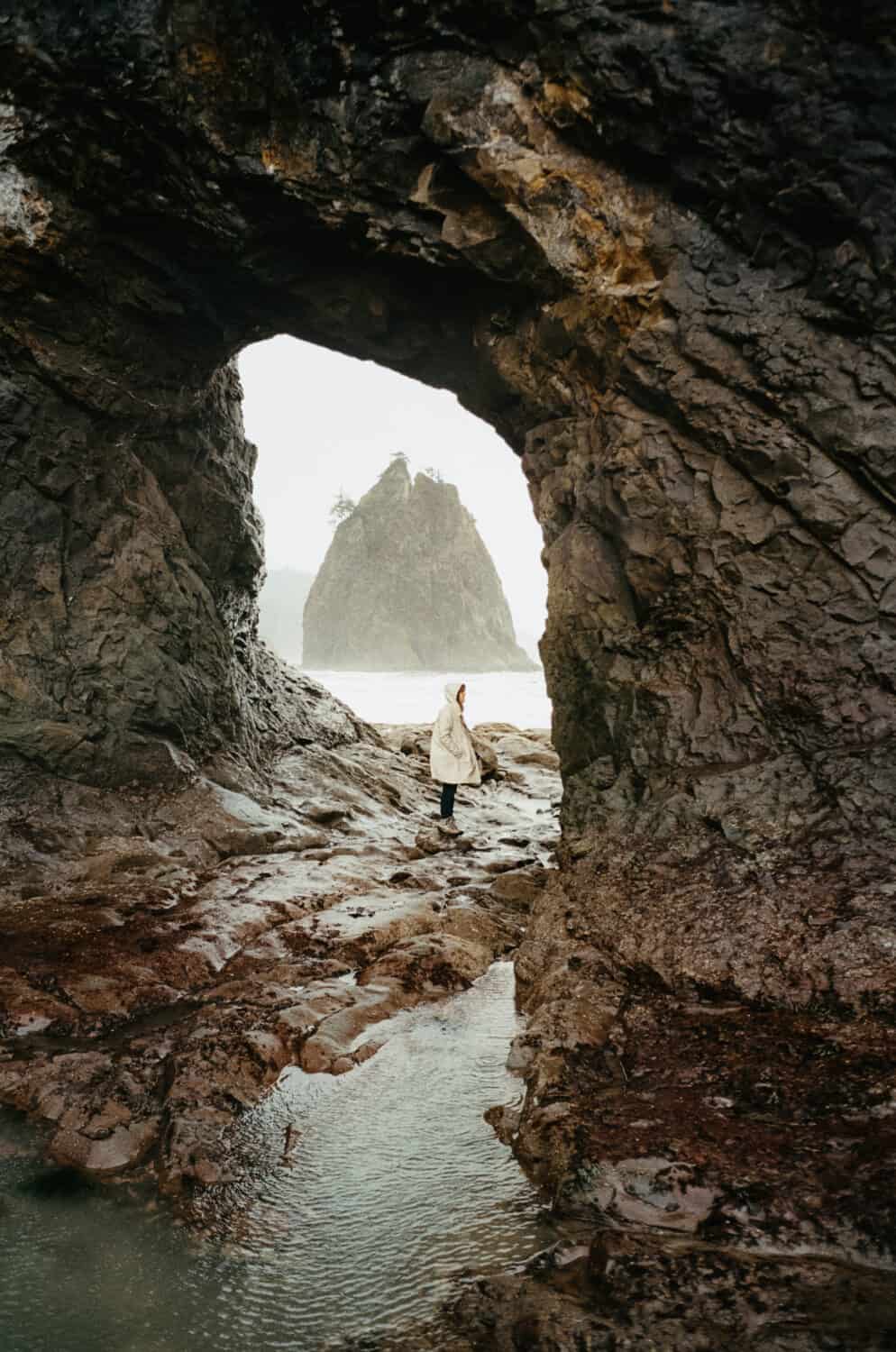
Fall is a beautiful time to visit Olympic National Park.
You can expect images with rich rainforest greens of the Hoh Rainforest, ocean blues, and the changing leaves of deciduous trees mixed in the forest.
Rain is common during this time of year, so it’s essential to be ready for wet weather.
Winter (December, January, February)
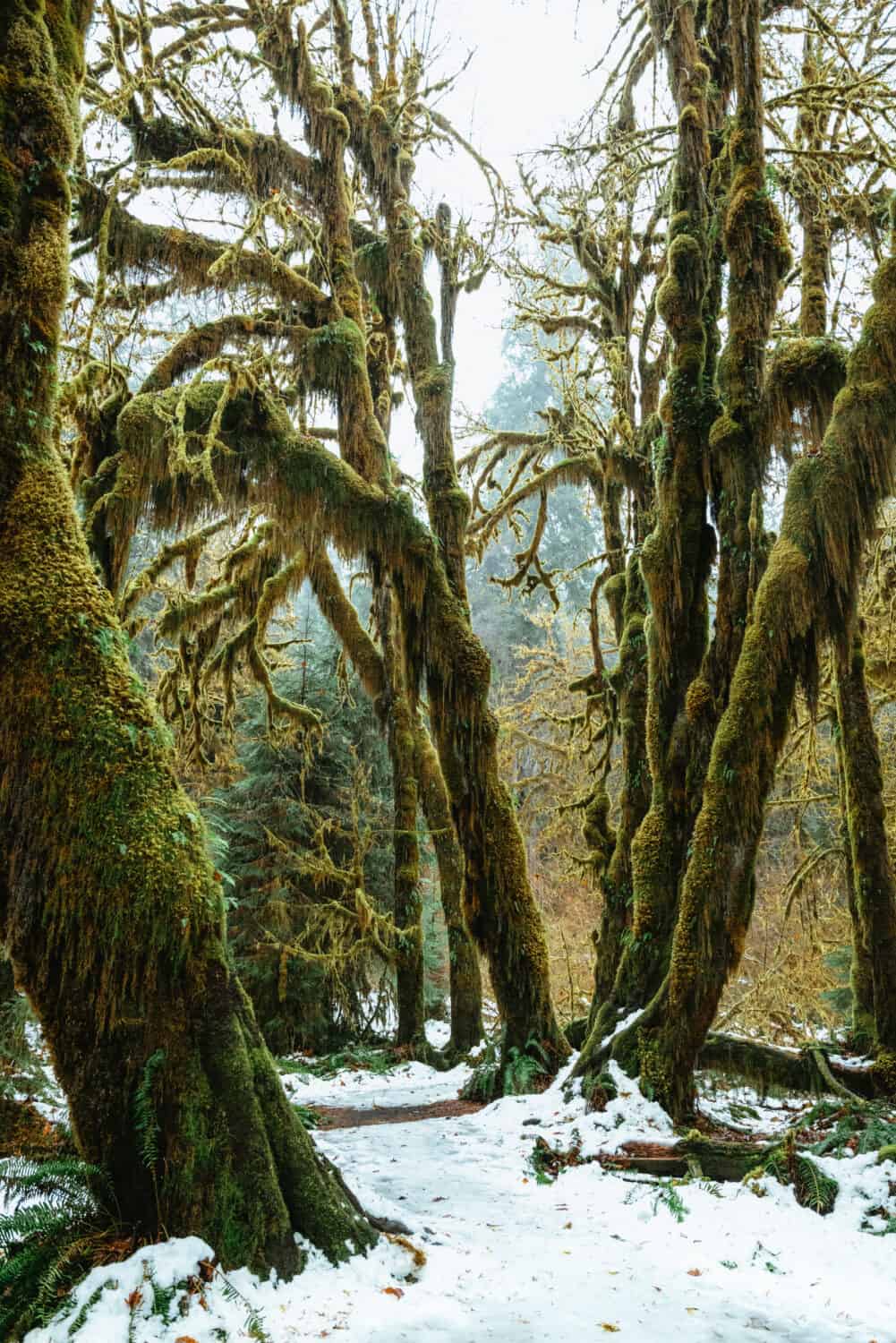
Winter in Olympic National Park almost guarantees wet, cold weather! It’s essential to come prepared with warm layers and waterproof gear.
However, this is the least visited time of year, which means you can capture the crystal white snow atop Hurricane Ridge for some incredible Olympic National Park pictures…all to yourself!
Spring (March, April, May)
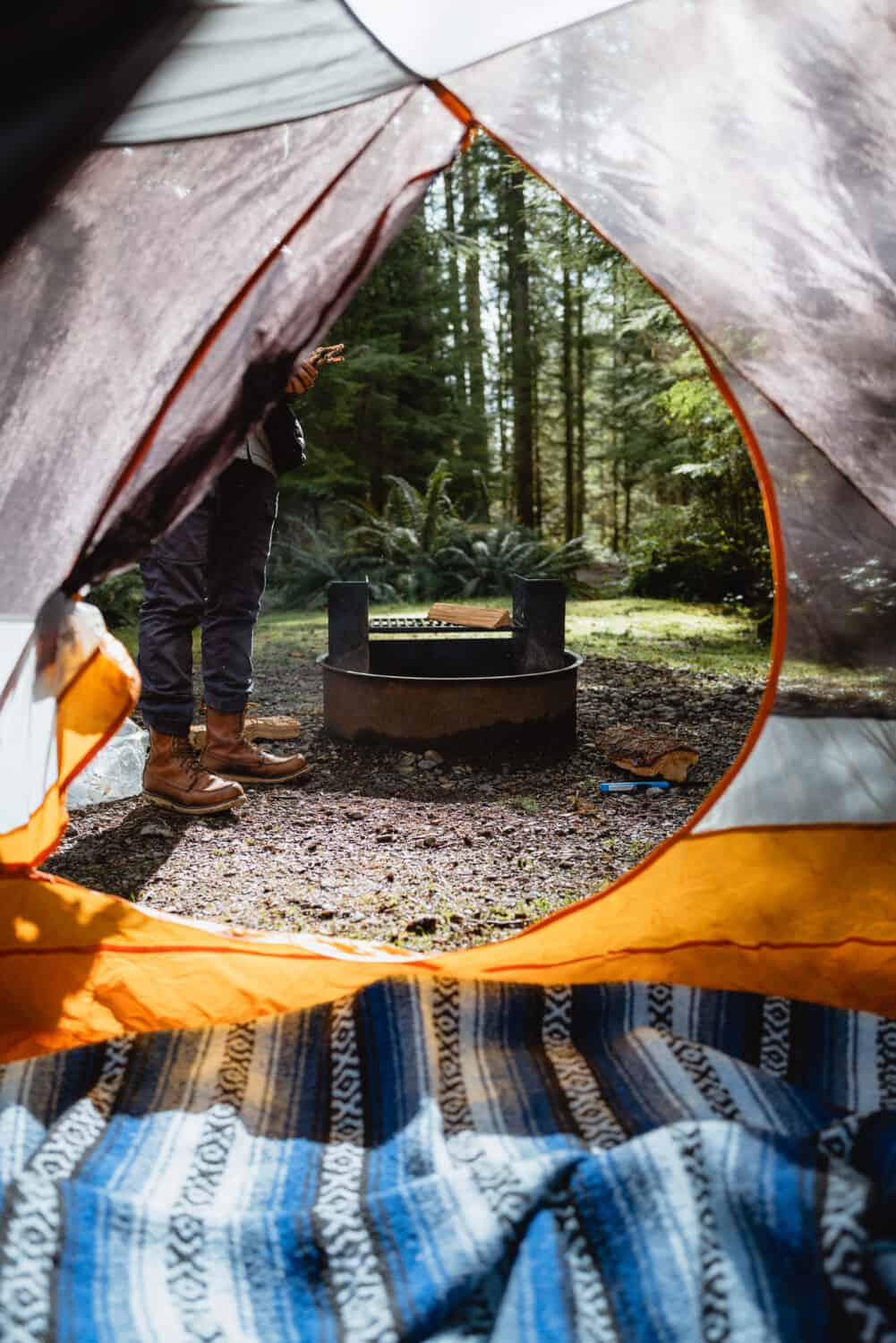
Spring is one of the wettest times of year in the park. You can expect rainy weather for more than half of the days of the month.
This is also the time that snow is melting, which means the waterfalls are raging! If you are hoping to capture long-exposure waterfall pictures, you should consider visiting Olympic National Park in the spring.
Camera Gear To Bring
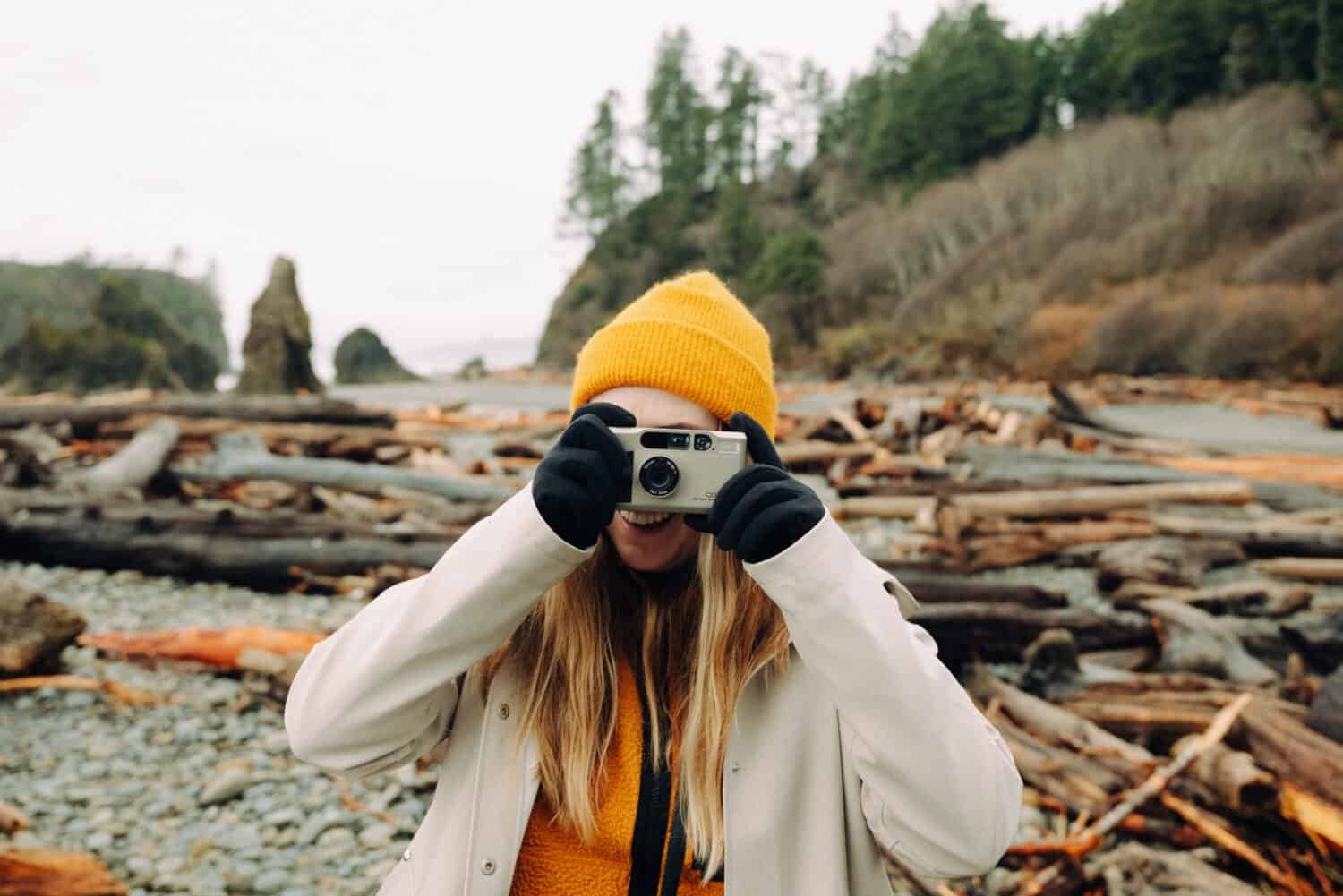
So, as an Olympic National Park photographer, what camera gear should you be packing?
For an extensive list of Pacific Northwest suggestions, read our complete travel photography gear list here. But we’re sharing the major essentials below!
For a complete pack list (of clothes, shoes, etc) refer here to our Olympic National park packing list!
Camera
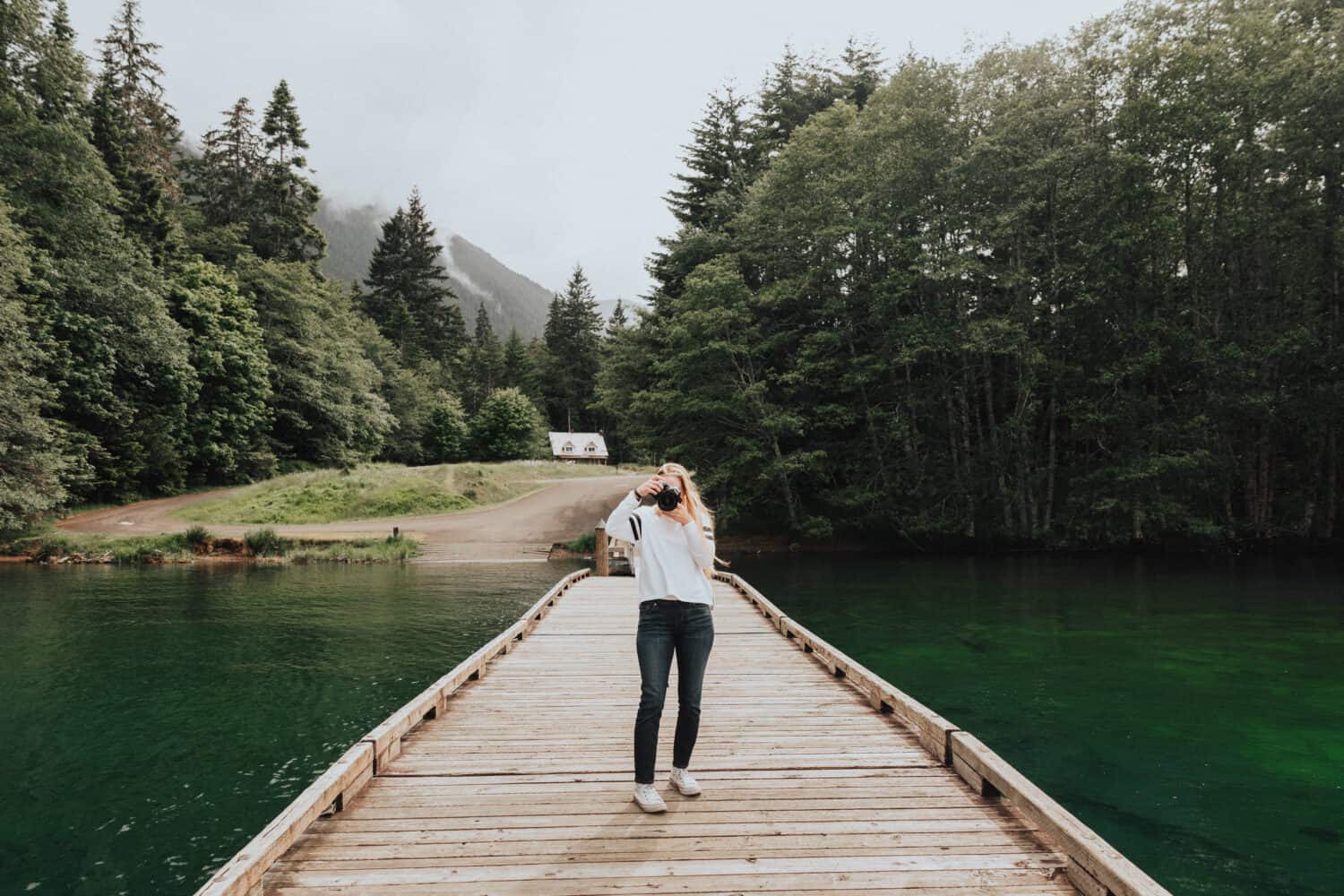
There are a lot of great camera on the market that will do a great job on the Olympic Peninsula!
It’s majorly important that you bring a camera that is weather-sealed.
The Sony A7 II is an affordable mirrorless-camera if you’re just getting stared. We also really like the Sony A6000 for an even more affordable option.
Finally, pack a mirrorless camera. Mirrorless cameras match the screen display to the captured image. (Real time feedback)
The Canon EOS R is an excellent choice for that if you’re building out your Canon collection.
Camera Lenses
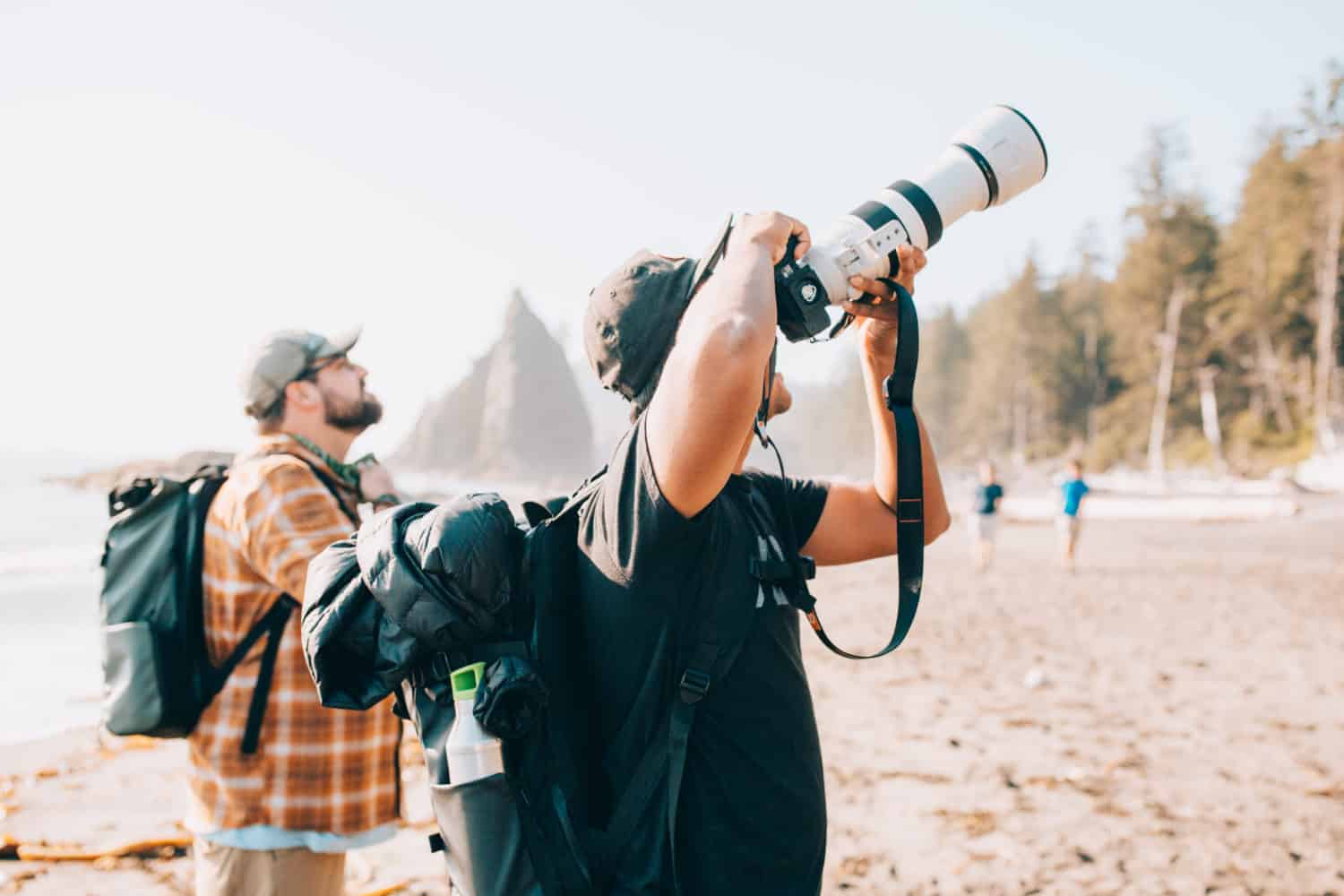
Bring 2-3 lenses to capture Olympic National Park images.
First, bring a wide-angle lens. Personally, we love our Canon 16-35mm f/2.8 because it can really take in the entire scene and make things look grand.
Alternatives: The Sigma 18-35mm f/1.8 is a cheaper option, and a this Sony FE 16-35mm f/2.8 GM is Sony’s verion.
Second, bring a “walk-around” lens. This one should replicate real-life visuals, without any stretching or compressing. The Canon EF 34-70mm f/2.8 is our choice for this.
Alternative: This Sigma 24-70mm f/2.8 is cheaper, and compatible with Sony cameras.
Finally, it you’re trying to capture far away subjects like wildlife, bring a telephoto lens. The Canon EF 70-200mm is our top pick.
Film Camera
This one is optional, but if you’re a film photographer, the Olympic National Park is one of the most photogenic spots in Washington!
Here are some beginner film cameras (under $500) we recommend, and a breakdown of the best 35mm color film. We suggest choosing film with a high ISO, (like Kodak Portra 800) to compensate for the cloudy sun-less weather.
Read More: 23 Incredible Gifts For Film Photographers They Will LOVE
Tripod
Personally, we aren’t the kind of Olympic National Park photographers who shoot with a tripod!
However, there are tons of reasons to bring one (long-exposures, self-portraits, etc) so here are our favorites.
The Magnus TR-13 Travel Tripod is really affordable ($75) and can hold up to 13.2 pounds of camera weight.
If you know you’re going to be using a tripod a lot, it’s worth it to splurge on the last tripod you’ll ever buy, the Peak Design Aluminum Travel Tripod. It weighs only 3 pounds and stores away SO small.
Lens Filters
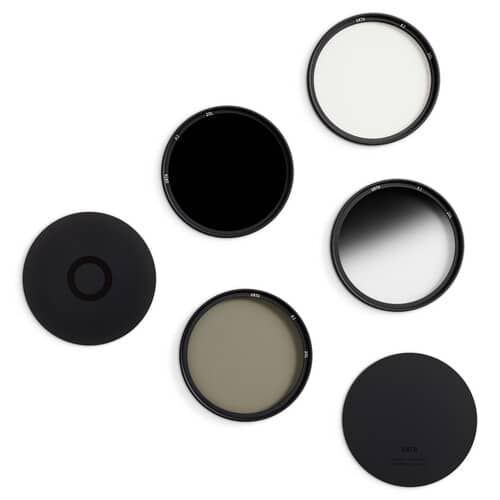
Lens filters can elevate your images! Use protective or polarizing filters to help you capture clear water and skies, and neutral density filters to give you more control over aperture and exposure settings.
Most importantly, make sure the filter you choose matches the lens size you have!
Rain Protection
No matter how hard you try, your gear will probably get wet when visiting the Olympics.
If you are concerned about gear safety, buy this camera rain shell by Peak Design to help keep water out.
How To Get Around Olympic National Park
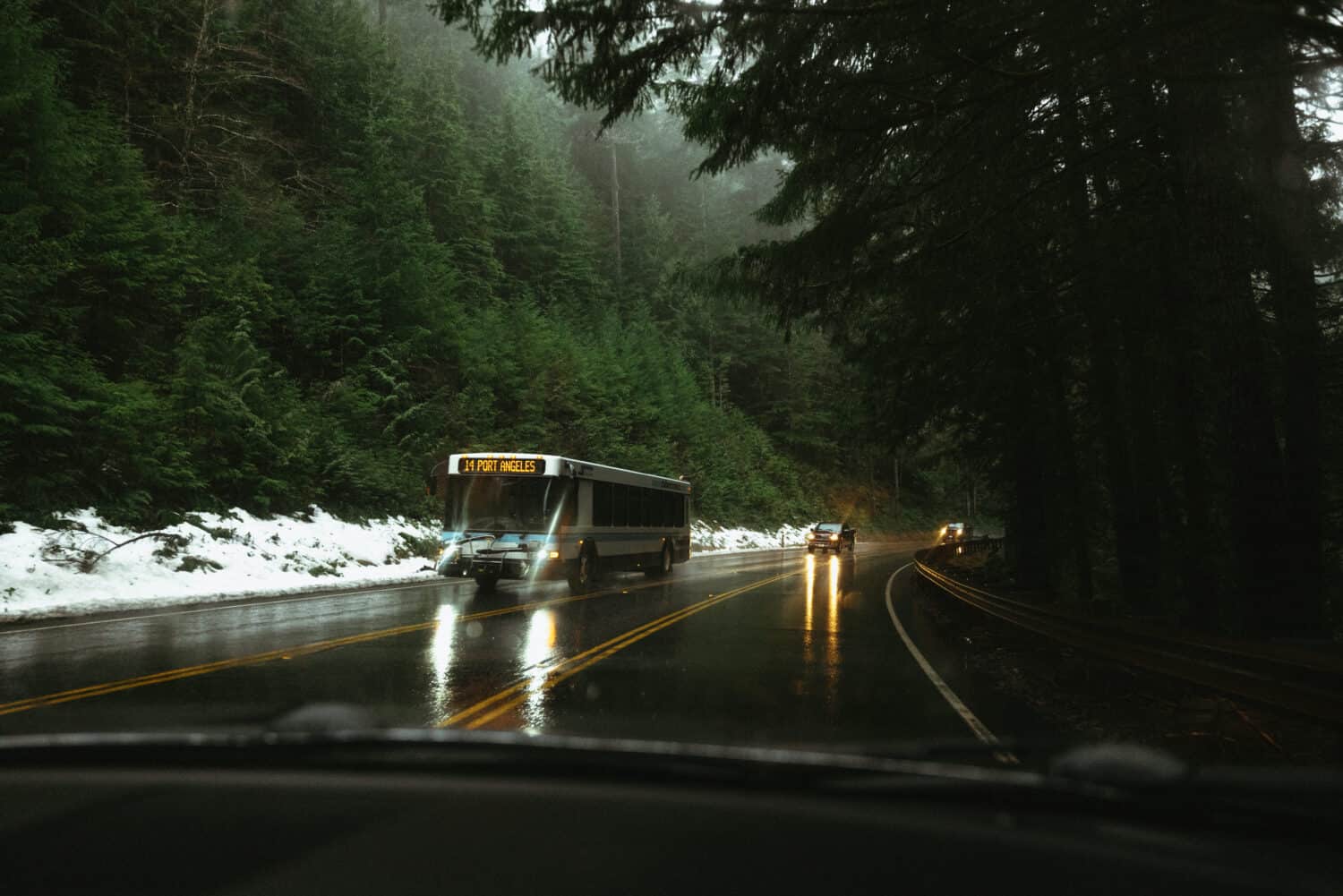
The park covers a huge area – almost 1 million acres of the Olympic Peninsula!
Many of these Olympic National Park photography locations are quite far from each other so you need to plan at least 2-3 days to get around the park.
To REALLY enjoy the park, we recommend planning a 4-5 day Olympic Peninsula road trip. We created a custom route that takes you to all the best spots in the park here, with a downloadable itinerary too.
Driving Tip: It’s almost impossible to get around Olympic NP without a car. Rent yours from RentalCars.com because they have the most suppliers within a wide range of budgets!
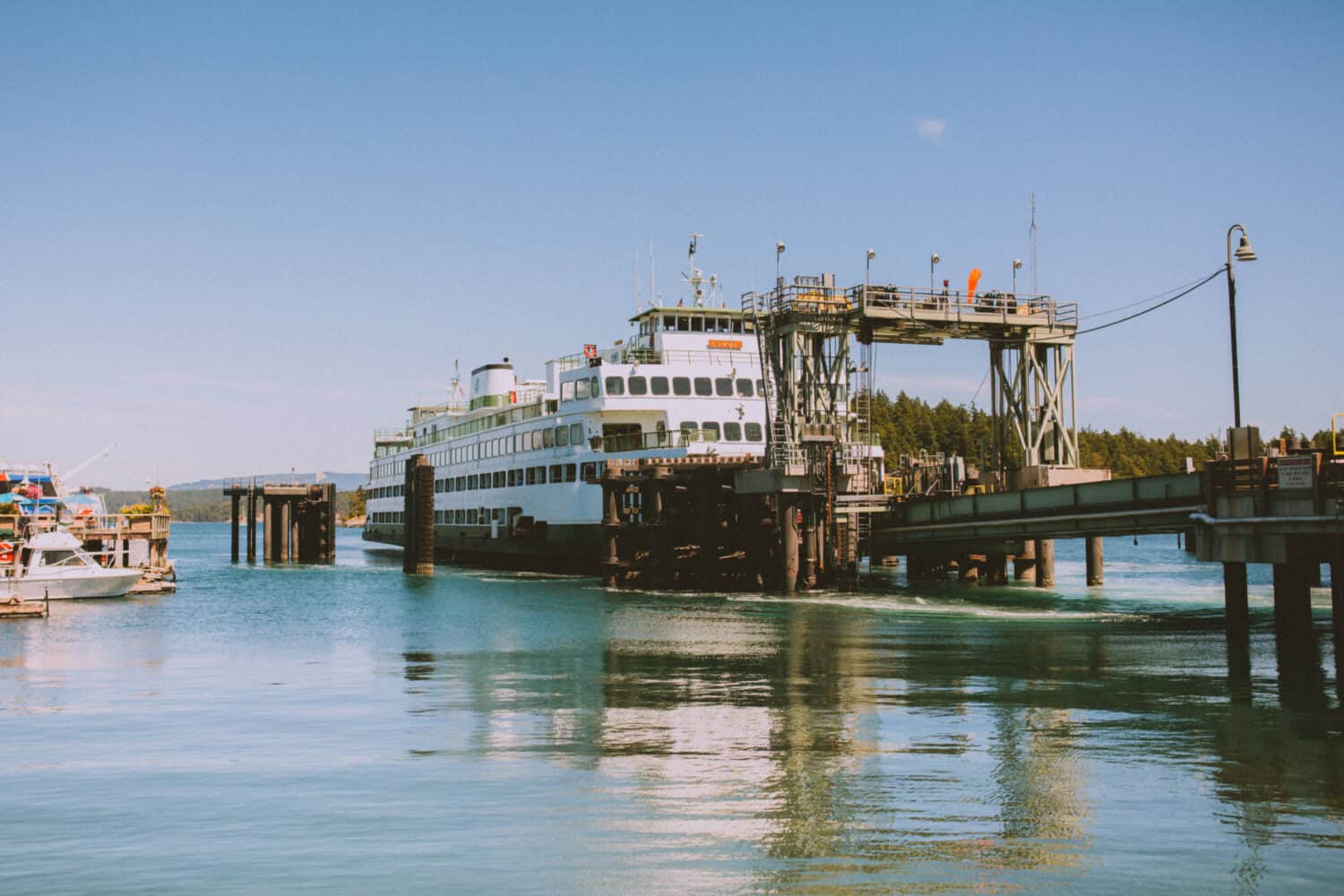
If you’re taking a weekend trip from Seattle, it’s easiest to take the ferry across Puget Sound to start your trip.
You can either catch the ferry from Downtown Seattle to Bremerton or the Edmonds to Kingston ferry if you live north of the city.
Finally, to enter sections of the park, you’ll need an American the Beautiful Pass.
This pass gives you access to all the US national parks for an entire calendar year, and is absolutely worth it if you are planning to visit just 3 parks.
Where to Stay in Olympic National Park
Need a more in-depth guide? Read our full post on where to stay in Olympic National Park.
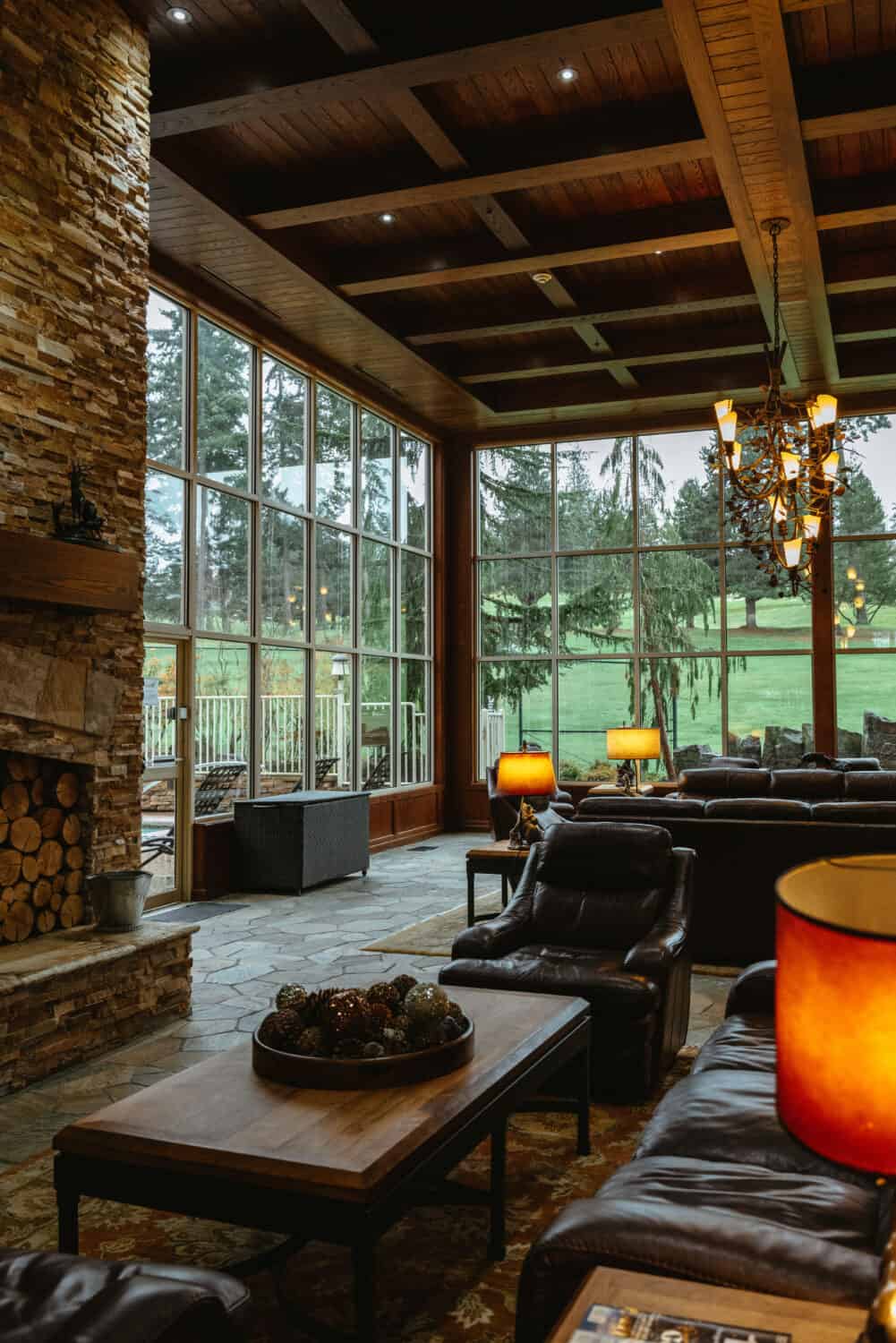
Because these Olympic National Park photo spots are quite far from one another, you’ll be booking more than one place to stay.
We cover in-depth all the best places to stay near Olympic National Park here, but here’s a quick overview of our most recommended accommodations:
Places To Stay Near Port Angeles
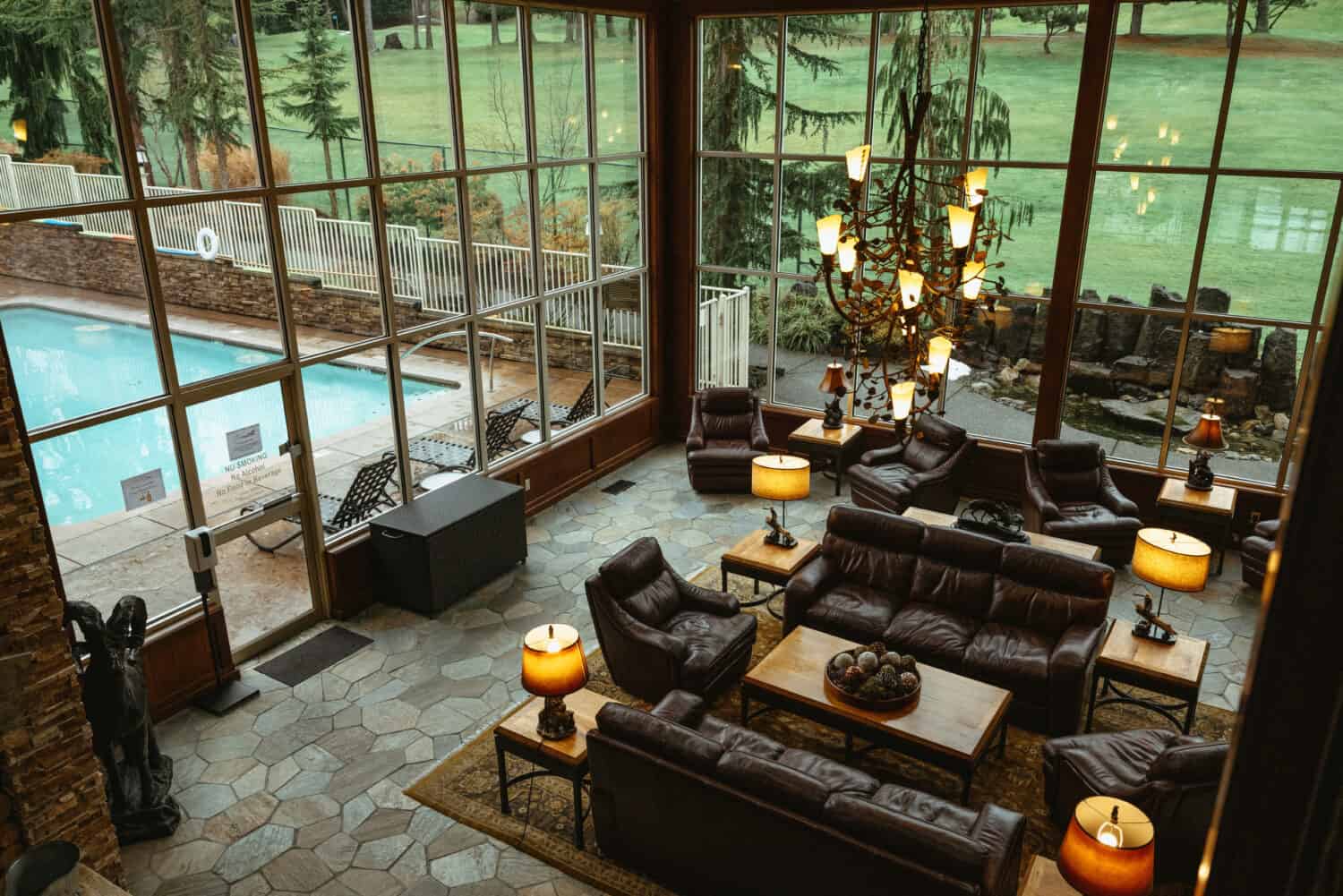
Good For: Olympic National Park pictures nearby that include Hurricane Ridge, Sol Doc Falls, Lake Crescent
Port Angeles is often the first stop for most exploring the Olympic National Park.
The Olympic Lodge by Ayers provides a warm welcome (their lobby is stunning) and free breakfast. For a more budget-friendly option, The Olympic Inn & Suites is a non-fussy place to crash for the night.
Places To Stay Near The Washington Coast
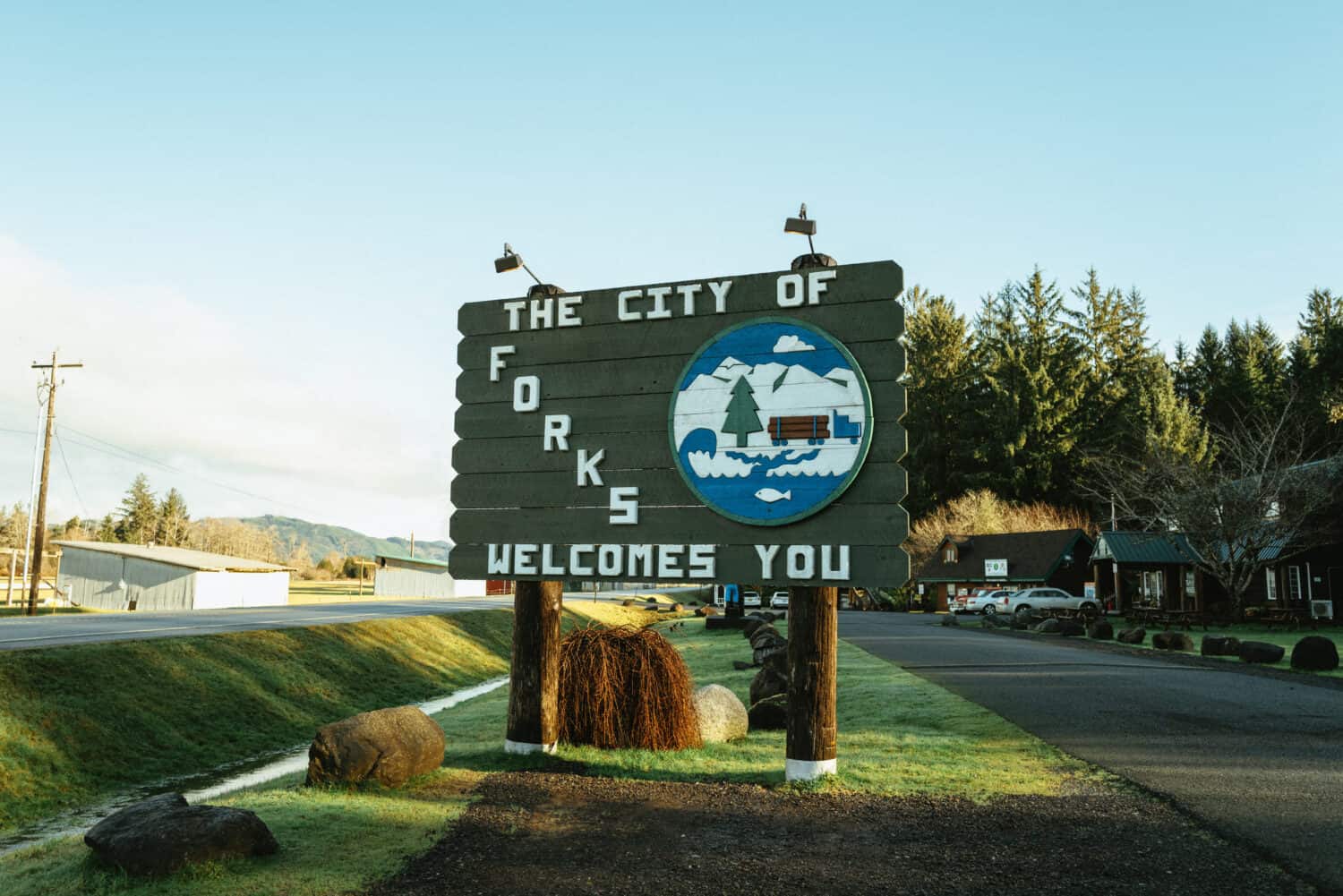
Good For: Photos of Olympic National Park nearby like Rialto Beach, Ruby Beach, Cape Flattery
The most convenient place to stay for capturing Washington coast photography is in the town of Forks.
The Pacific Inn Motel and Woodlands Inn Motel are right on the main street of town, and convenient for gas, coffee, and groceries.
A littler further south, the Kalaloch Lodge is another great option, although they don’t have wifi.
Places To Stay Near The Washington Rainforest
Good for: Hoh Rainforest photography, Lake Quinault access, Staircase Area exploring
Staying close to the rainforest means your options are cozy vacation rentals and bed & breakfast spots.
Misty Valley Inn and Hoh Valley Cabins are both really great options!
The Best Places To See In Olympic National Park (LIST)
Okay, now that you’ve got all the logistics squared away, it’s time to get into the fun stuff!
Keep reading for all our favorite places to take photos of Olympic National Park, including gear tips for each location, composition and timing recommendations, and more.
1. Port Angeles
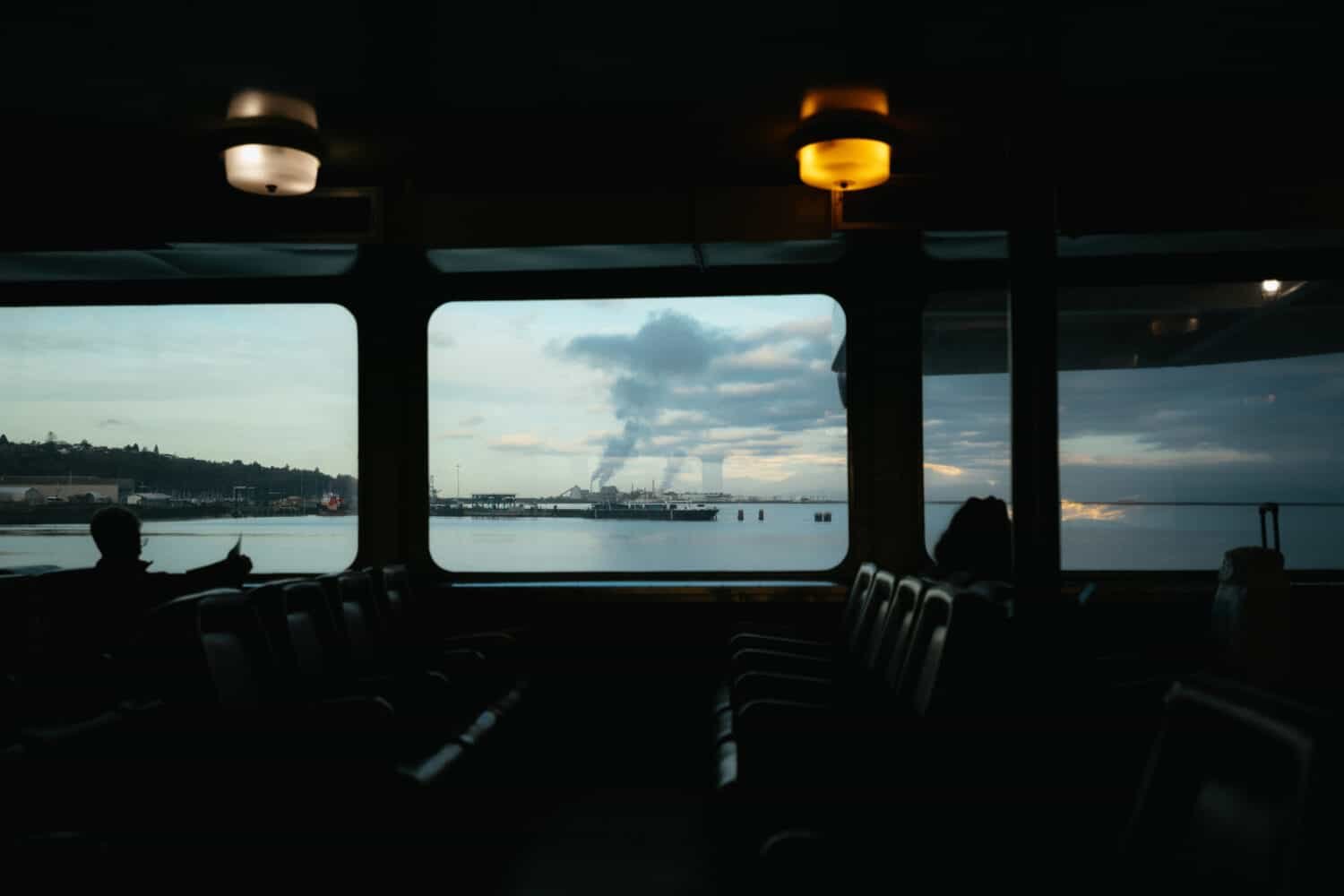
Port Angeles is usually the first stop on our trips to the Olympic Peninsula.
We regularly pass through and grab a bite to eat at their many delicious mom & pop restaurants.
This is also the place to stop if you need to pick up any wilderness permits, or grab a map of the park.
To take pictures around the area, grab your walk-around lens and check out the City Pier or the Sequim Lavender Farms on a sunny summer day.
The pier is also the place to catch a ferry up to Victoria, BC (passport required) if you’re planning a Vancouver Island road trip!
Other Olympic Towns: 7 Fun Things To Do In Ocean Shores, WA
2. Lake Crescent
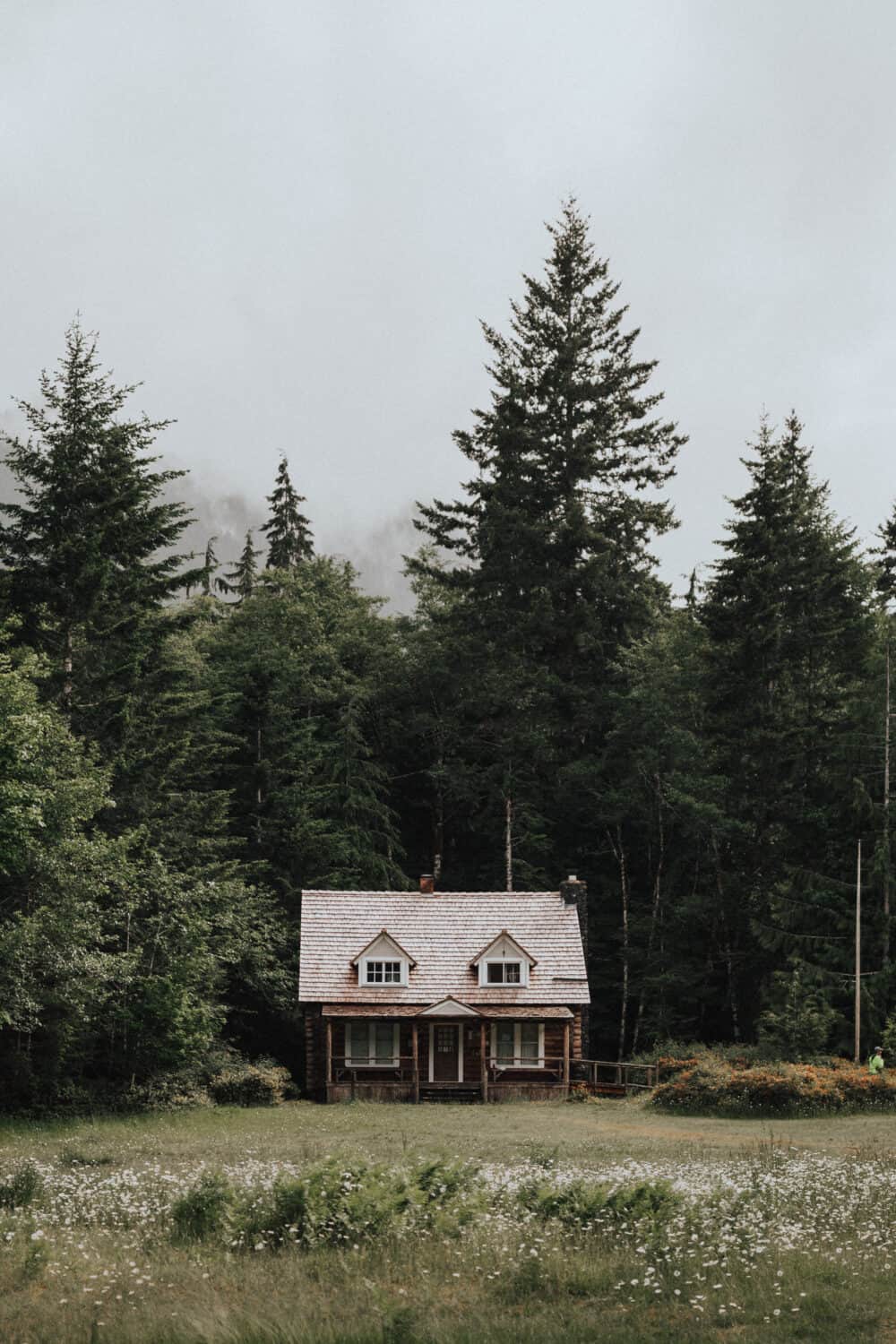
Located about 30 minutes west of Port Angeles, this lake has beautiful public docks and trails for you to enjoy.
Spend some time at the iconic Mount Storm King Ranger Station, one of the most famous cabins in the Pacific Northwest. Sadly you can’t stay overnight here, but it’s still worth a visit!
Also here is the trailhead to Marymere Falls and the very challenging Mount Storm King trail for insane views of the lake below.
We recommend coming early in the morning for a quiet trail and a peaceful, glassy lake view!
Read More: Lake Crescent in the Fall
3. Hurricane Ridge
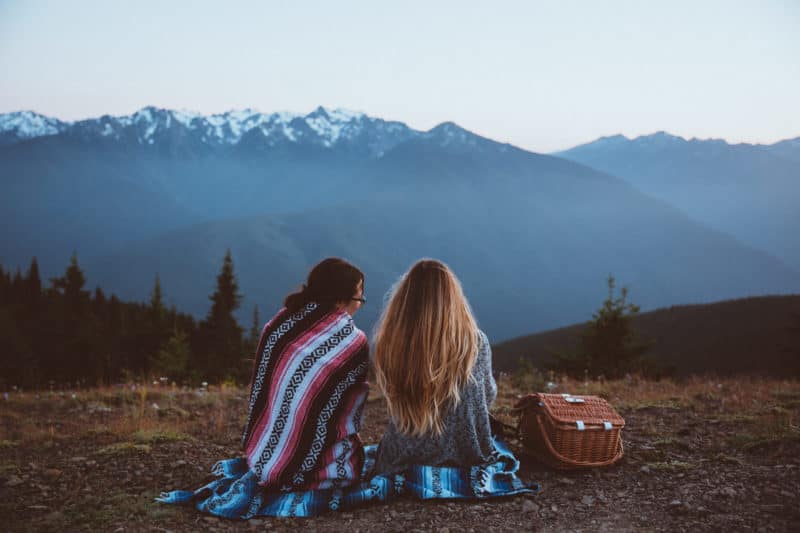
This place is worth the drive any time of year. We’ve come up to snowshoe in the winter as well as a quick picnic in the summertime.
During the summer season, we recommend visiting Hurricane Ridge for sunrise or sunset. The uninhibited sky will light up with pinks, oranges, and blues! The view of the Olympics is one you won’t forget. Come with a blanket or a jacket. It gets cold very quickly even in the summer!
In the winter, Hurricane Ridge has limited access because of the snow on Hurricane Ridge Road. The road is typically open to uphill traffic from 9 am to 4 pm, Friday through Sunday and some holidays. However, snow can alter these plans so it’s very important to confirm access before heading up!
Coming here, we suggest packing a lens filter. This will help you capture images easier in harsh light conditions like snow, and get more clarity in sky and sunset photos.
4. Marymere Falls
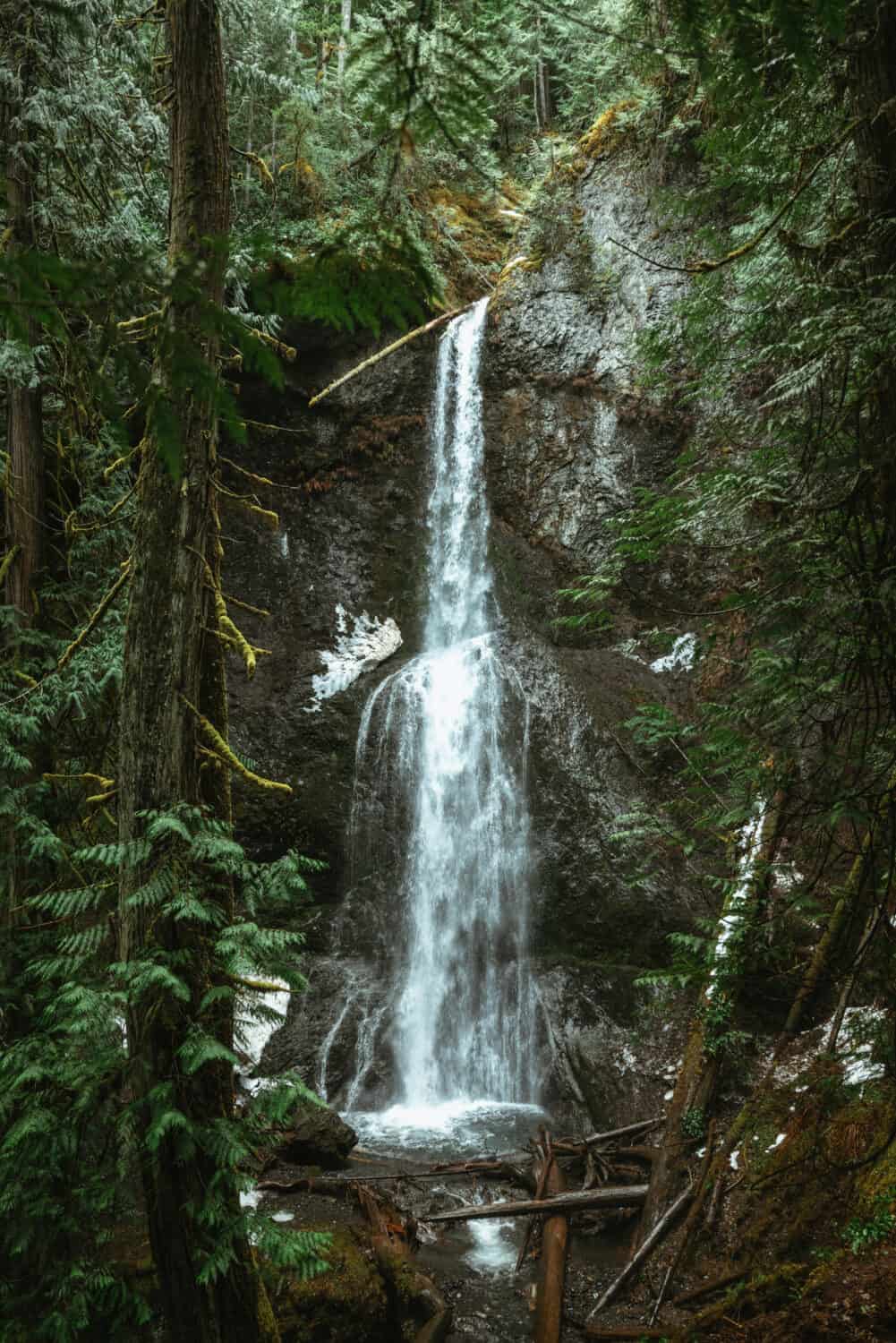
Marymere Falls is an easy 1.7-mile out and back trail starting at the Storm King parking lot. It’s one of the most popular Washington waterfalls in the Olympic Peninsula, and a fun trail to take with the whole family.
For photographers, there are plenty of places to park and set up a tripod for long exposure images! We recommend coming in the springtime when the water levels are at their highest (around May and June).
5. Madison Falls
Madison Falls is another popular waterfall in the Olympic National Park.
It’s located off Highway 101 on Olympic Hot Springs Rd. It’s an extremely short walk to the falls from the trailhead (0.2 miles total) so it’s an easy stop along your Olympic Peninsula road trip.
Stay a little longer: Hike to Olympic Hot Springs, or check out other nearby Washington hot springs!
6. Sol Duc Falls
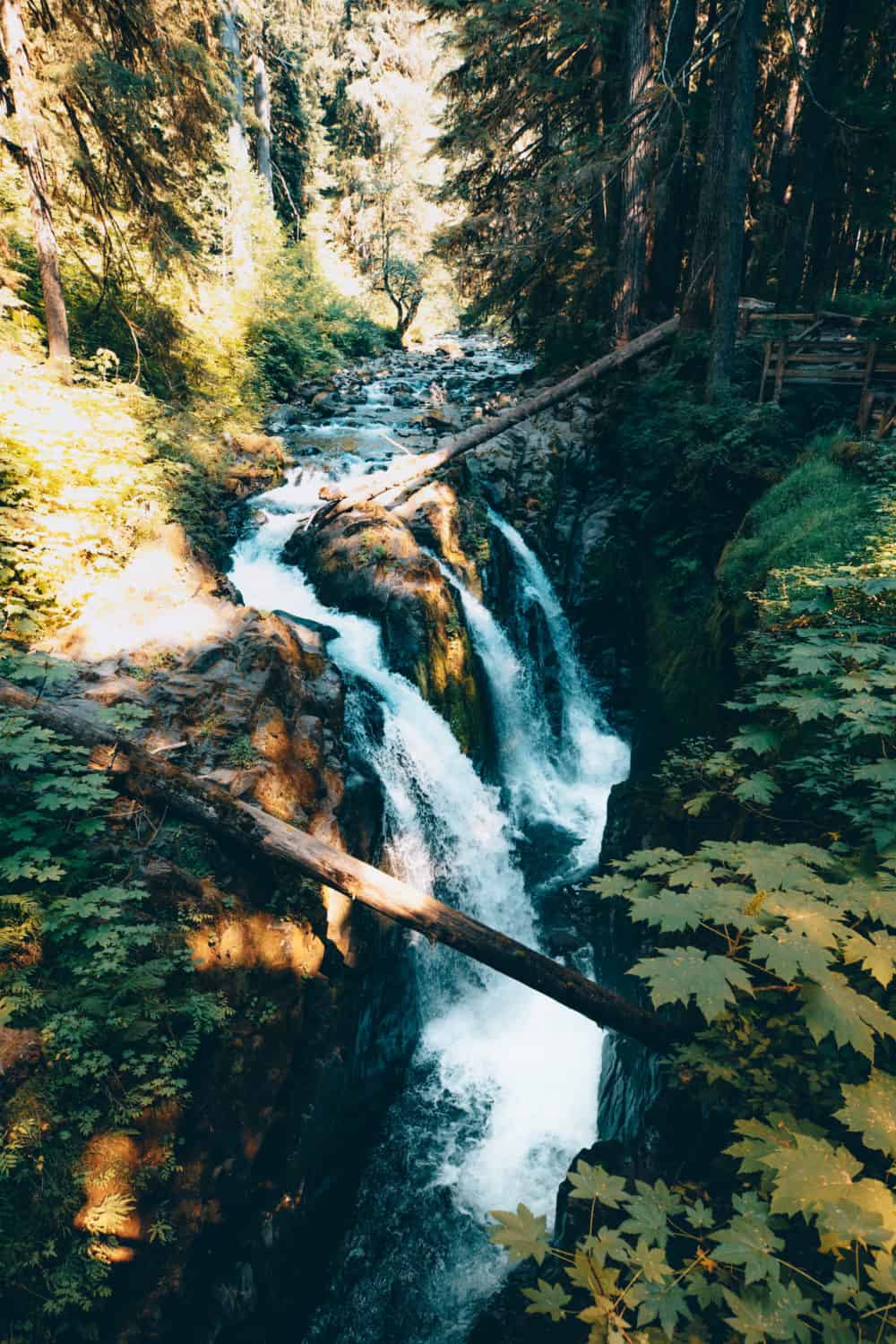
Sol Duc Falls is the most popular waterfall in Olympic National Park. It’s the waterfall along the Sol Duc River that separates into three different parallel strands, plunging into the canyon below.
It’s very common to see photographers setting up tripods on the bridge that crosses the canyon, to capture long-exposures of the waterfall.
After capturing this famous composite, try wandering around the area to get a different, unique perspective too!
7. Clallam Bay
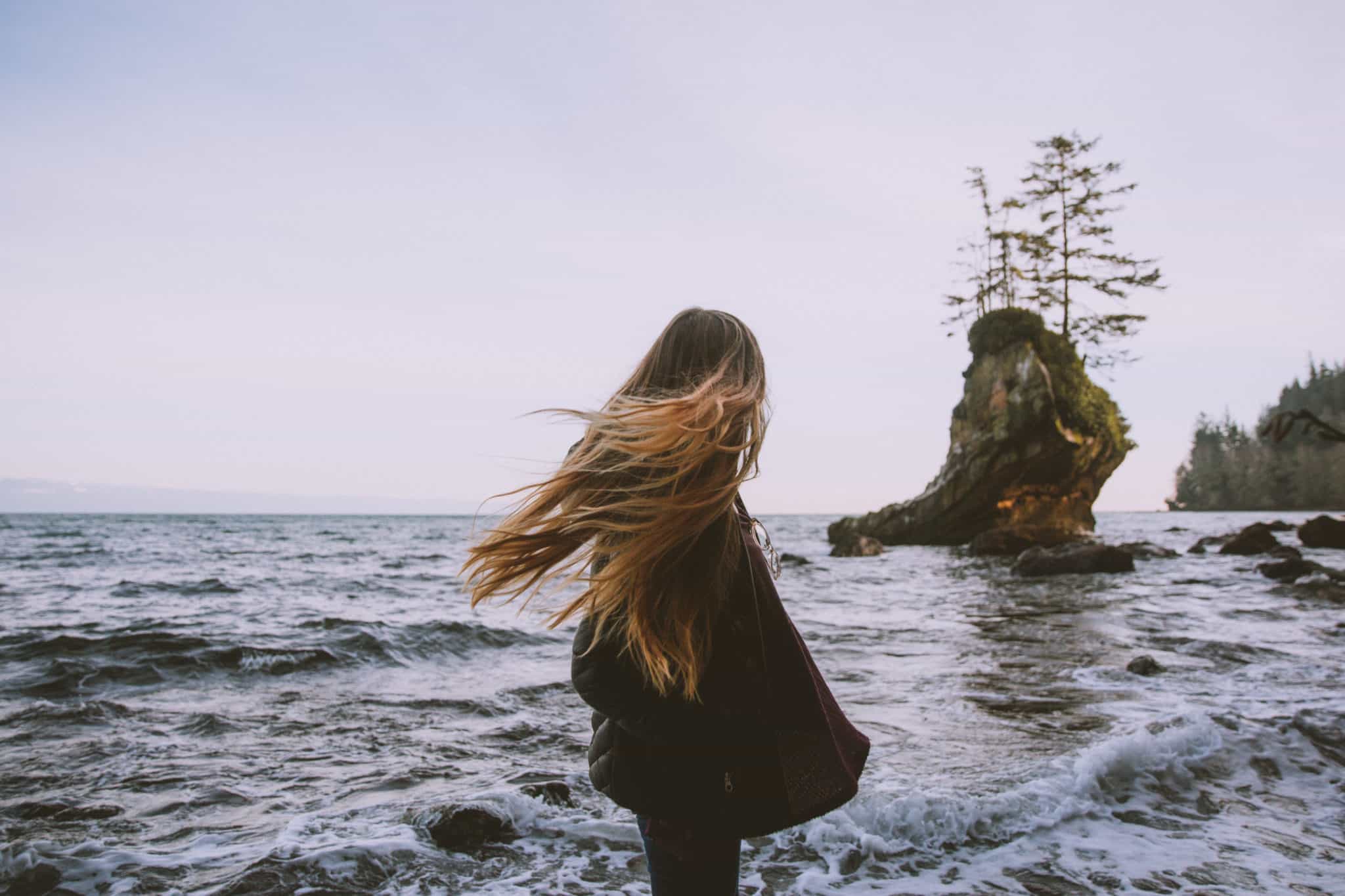
We found this place by accident!
On our way to Cape Flattery, we spotted a rock formation free-standing off the shore.
We pulled our car over and spent a while checking out the marine life on the beach and taking pictures of this beautiful rock. On your way to Neah Bay, keep you eyes our on the Strait of Juan de Fuca to spot this rock formation.
Access to the shore depends on the rising and falling tides, but if you really want to get out on the shore, save this website for the local tide times.
8. Cape Flattery
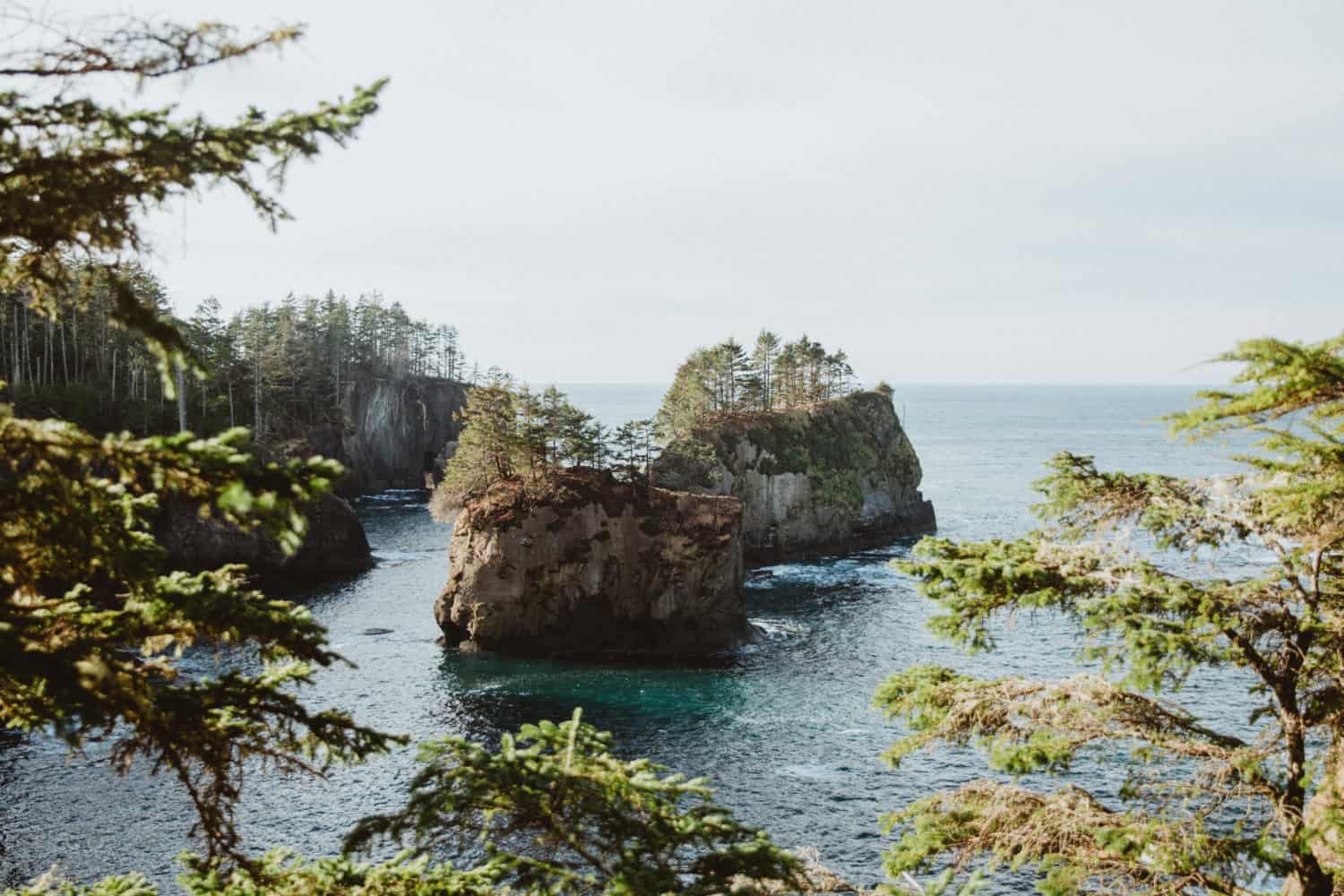
Note: Cape Flattery is NOT a part of the Olympic National Park, but located on Makah Tribal Land. We are including it because it’s a popular ad common stop for many taking an Olympic National Park photography tour!
This place really exceeded our expectations. After a short 10-minute hike, there are several boardwalks to discover, each with its own breathtaking views of the cape in all directions.
There were many places to sit down and enjoy the view too. I’ve seen and heard that there are some pretty beautiful caves at the base of these formations, so I’m excited about a return trip this summer. Maybe with some kayaks…?
READ MORE: The Complete Guide to Visiting Cape Flattery
9. Twilight Tour Stops
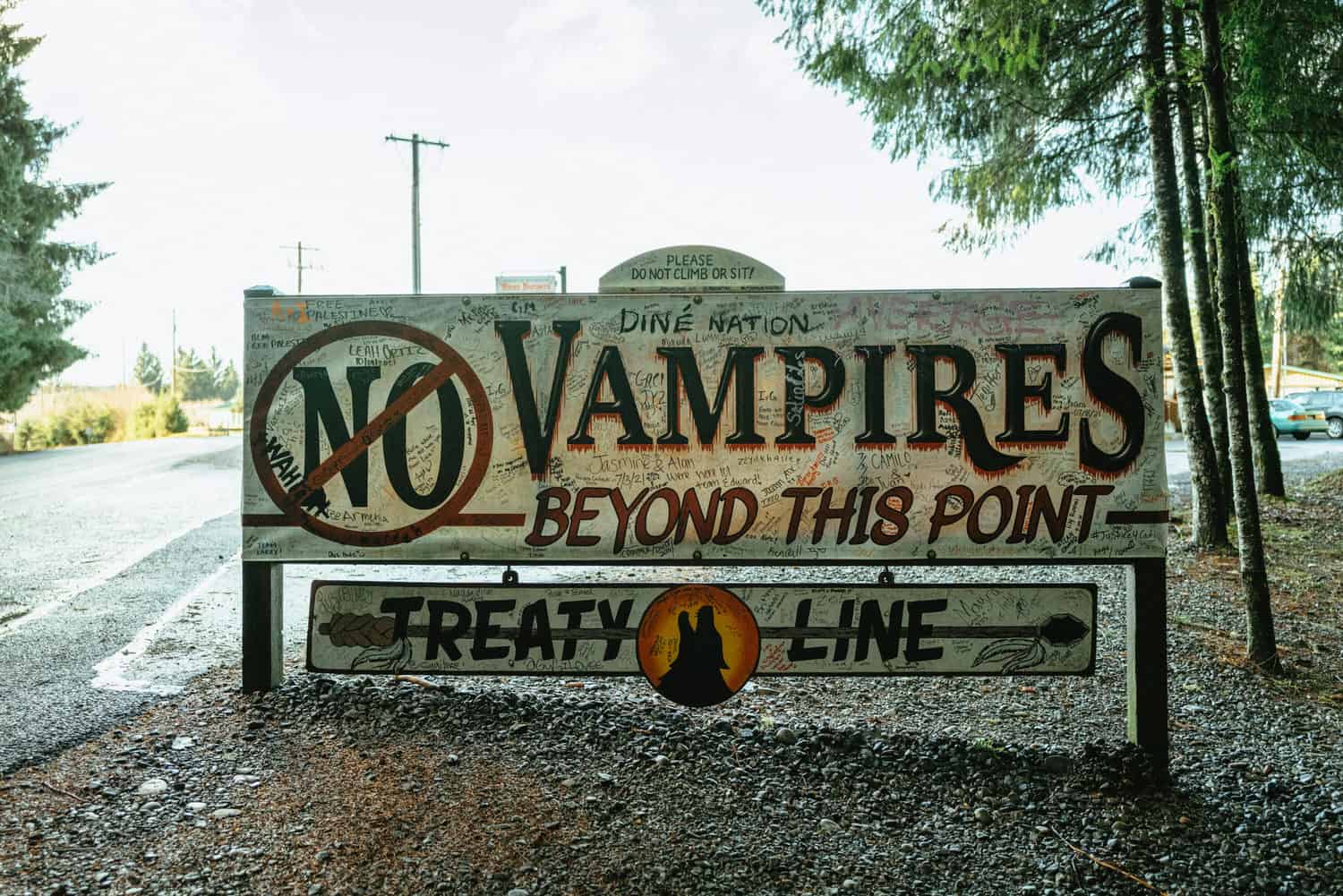
Bella, Edward, Jacob…are you a fan of the Twilight Series? These books have put Forks, Washington on the map as a destination for book and movie fans alike!
There are several iconic stops to take in this area to relive moments in the books. Some we’re including below like First Beach (La Push baby, It’s La Push!), and other like the Treaty Line, The Swan House, and Forks High School are also included in this route.
We’ve put together a Twilight Tour of Forks, Washington that takes you on the best route to see all these places from the books!
10. First Beach
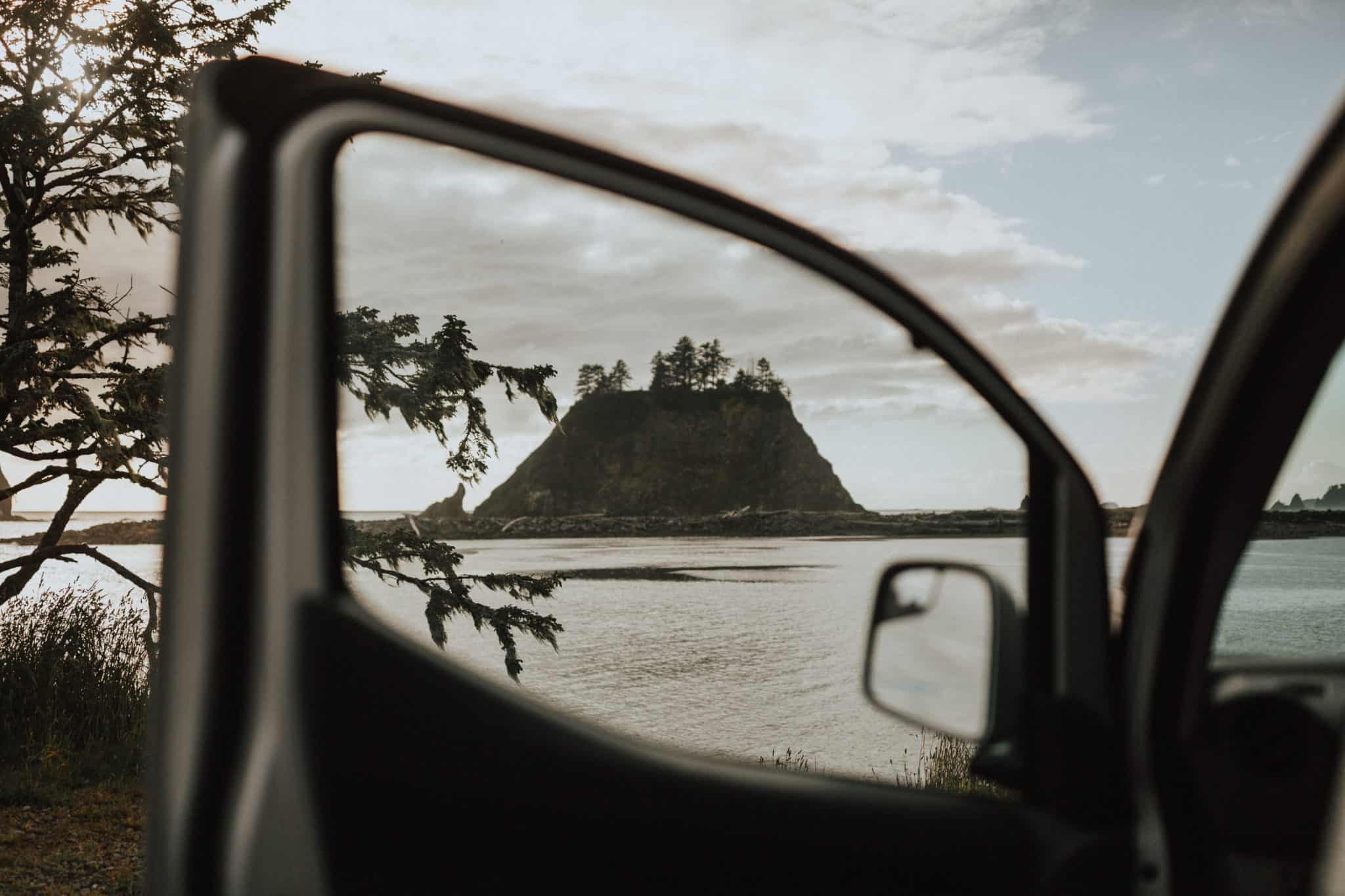
On this part of the Washington coast, there are 3 iconic beaches in the La Push area, consecutively named First, Second, and Third Beach.
First Beach is easy to get to, with a parking lot right on the water. First Beach is located on Quileute Nation land, so it’s important to follow signs, and respect any closures that might be in place.
11. Second Beach
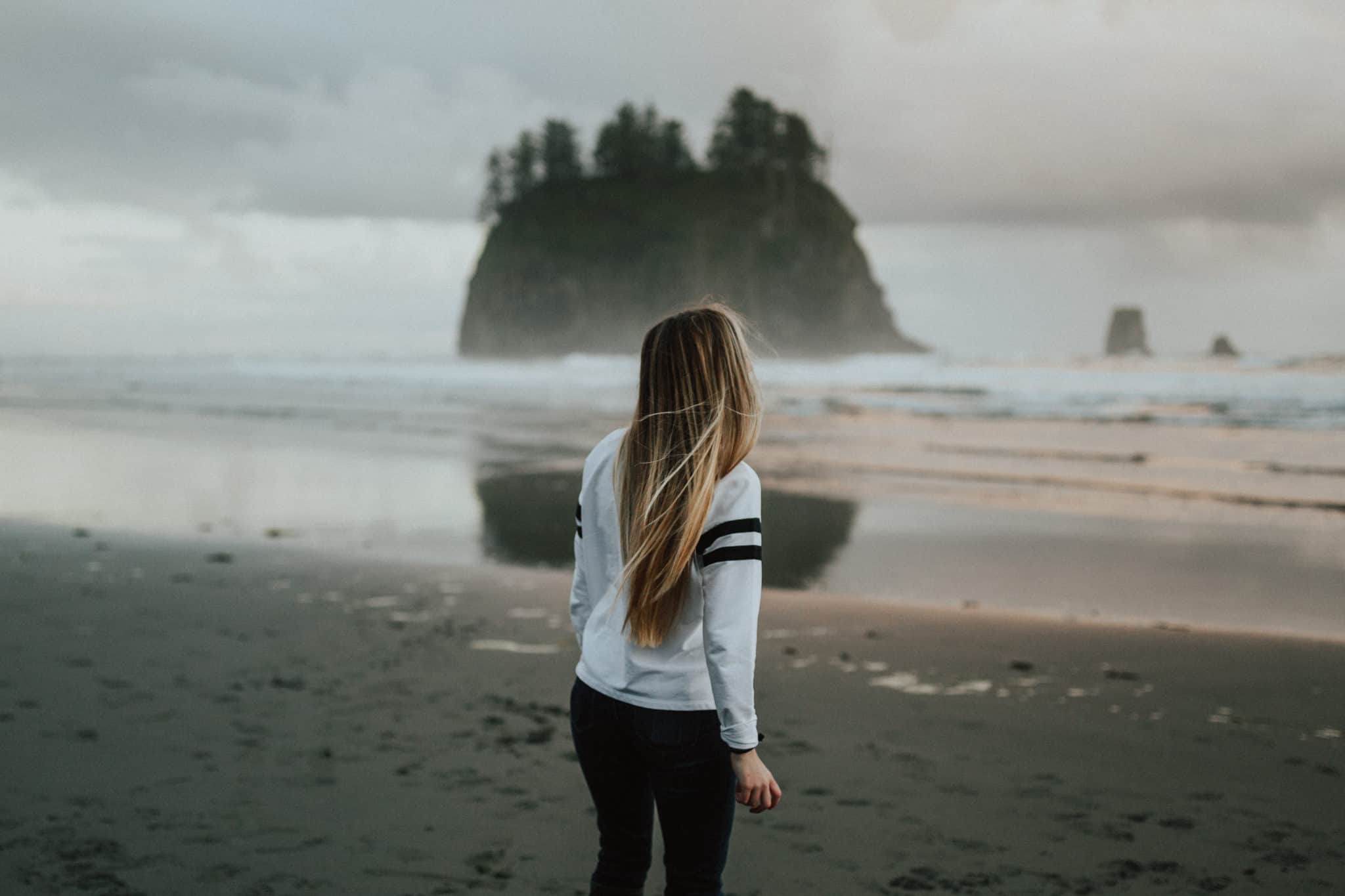
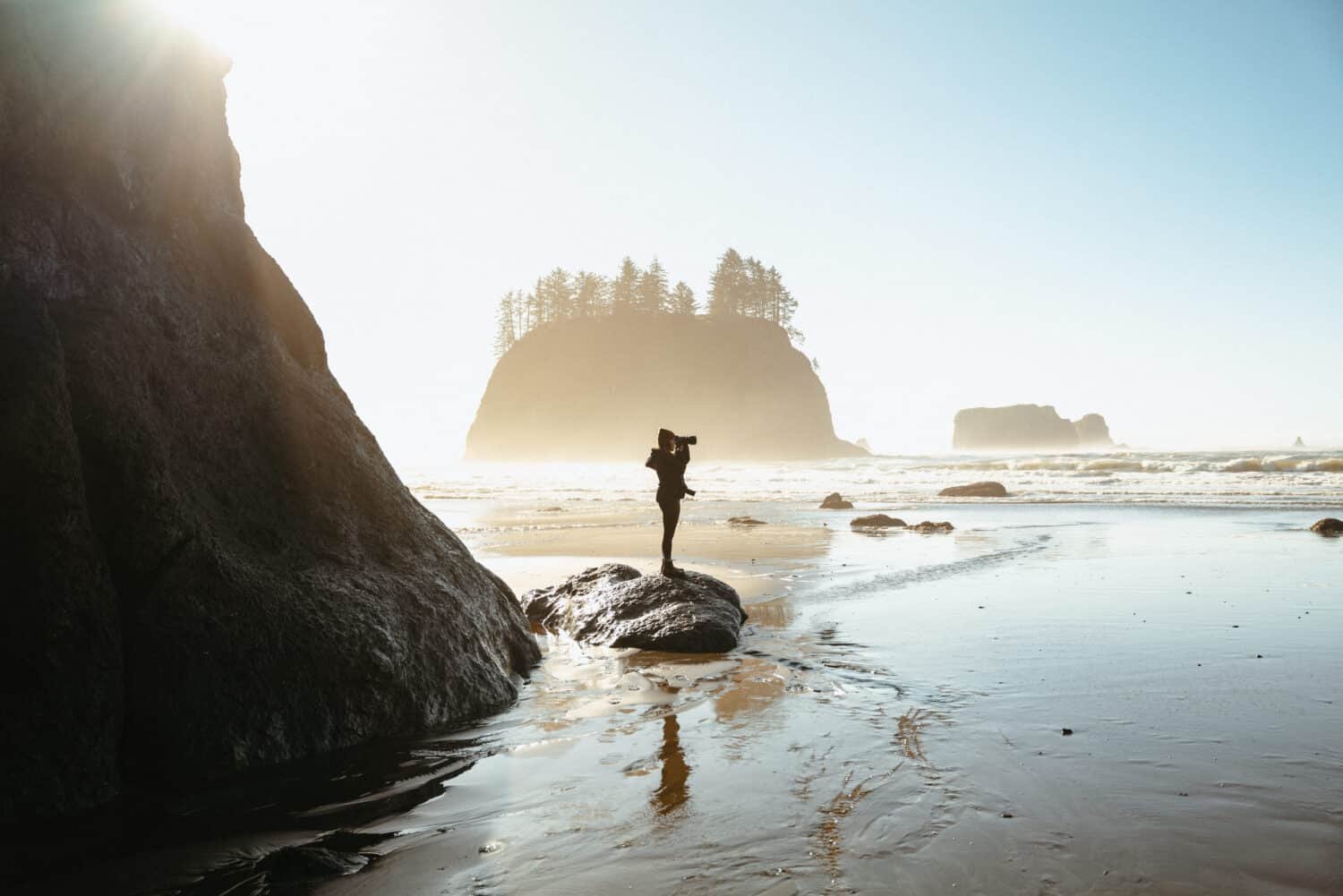
Second Beach is the most popular of the three, and requires a quick 15-minute hike down a forest path before you head to the shore.
It has a parking lot and a hike, so come prepared with adequate water and supplies for your journey.
Its iconic rock formations are a must-see (especially during summer sunsets) and *bonus* you can actually camp here! Read our guide to camping on Washington beaches here, which shares important permit and packing information.
Read More: 101 Adventurous Things To Do In The Pacific Northwest
12. Rialto Beach
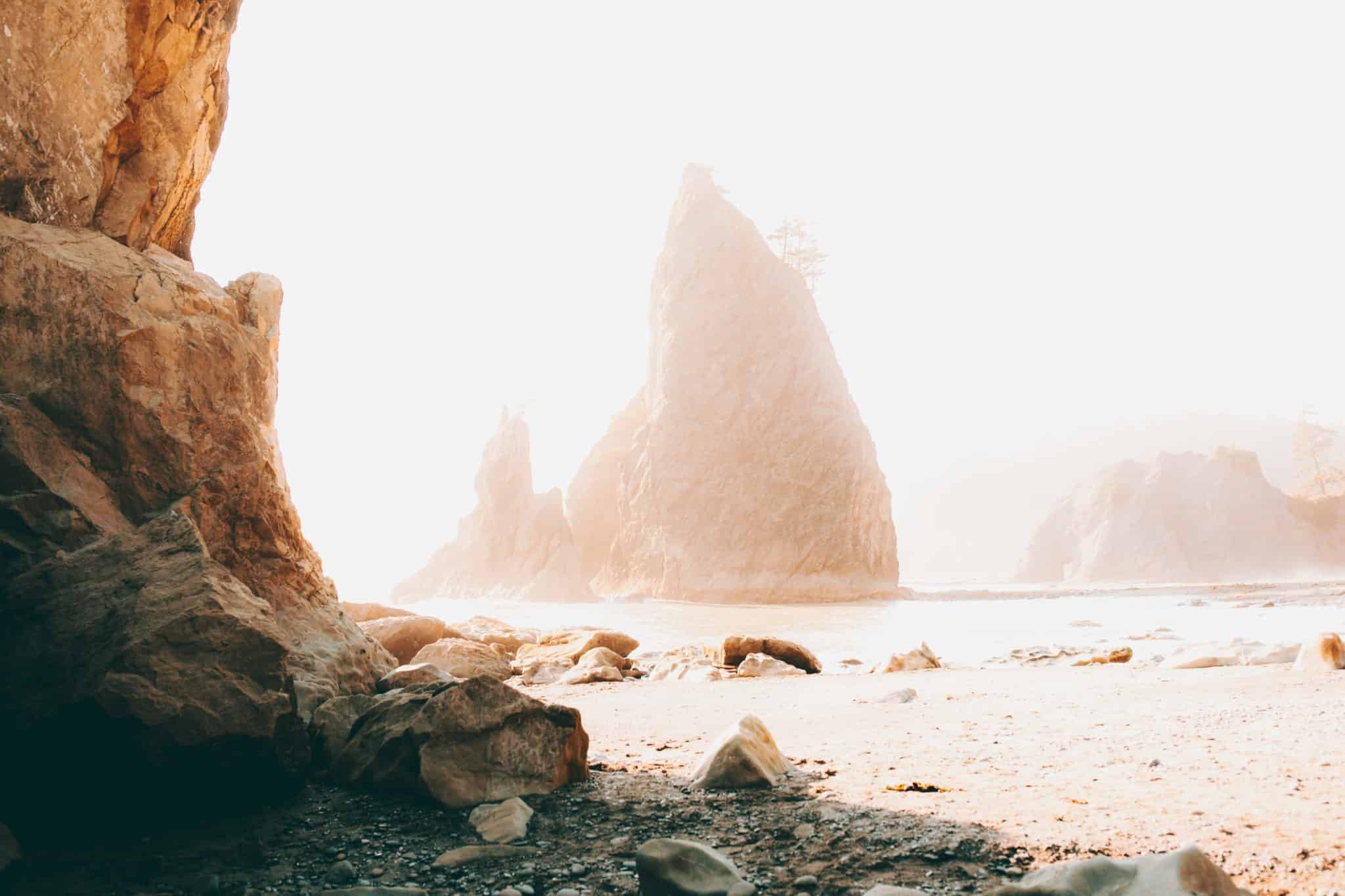
If you’re looking for moody Washington beaches, look no further than Washington’s Rialto Beach!
The bleached, skeleton-like downed logs that litter the shoreline give it a somber vibe. It’s a perfect space for some personal reflection!
If you keep hiking up the beach for 1.5 miles, you’ll encounter one of the most famous Washington photography locations.
Hole-In-The-Wall Trail (a 3.5-mile out and back trail) gives you scenic views of the Pacific Ocean and gorgeous rock formations!
13. Ruby Beach
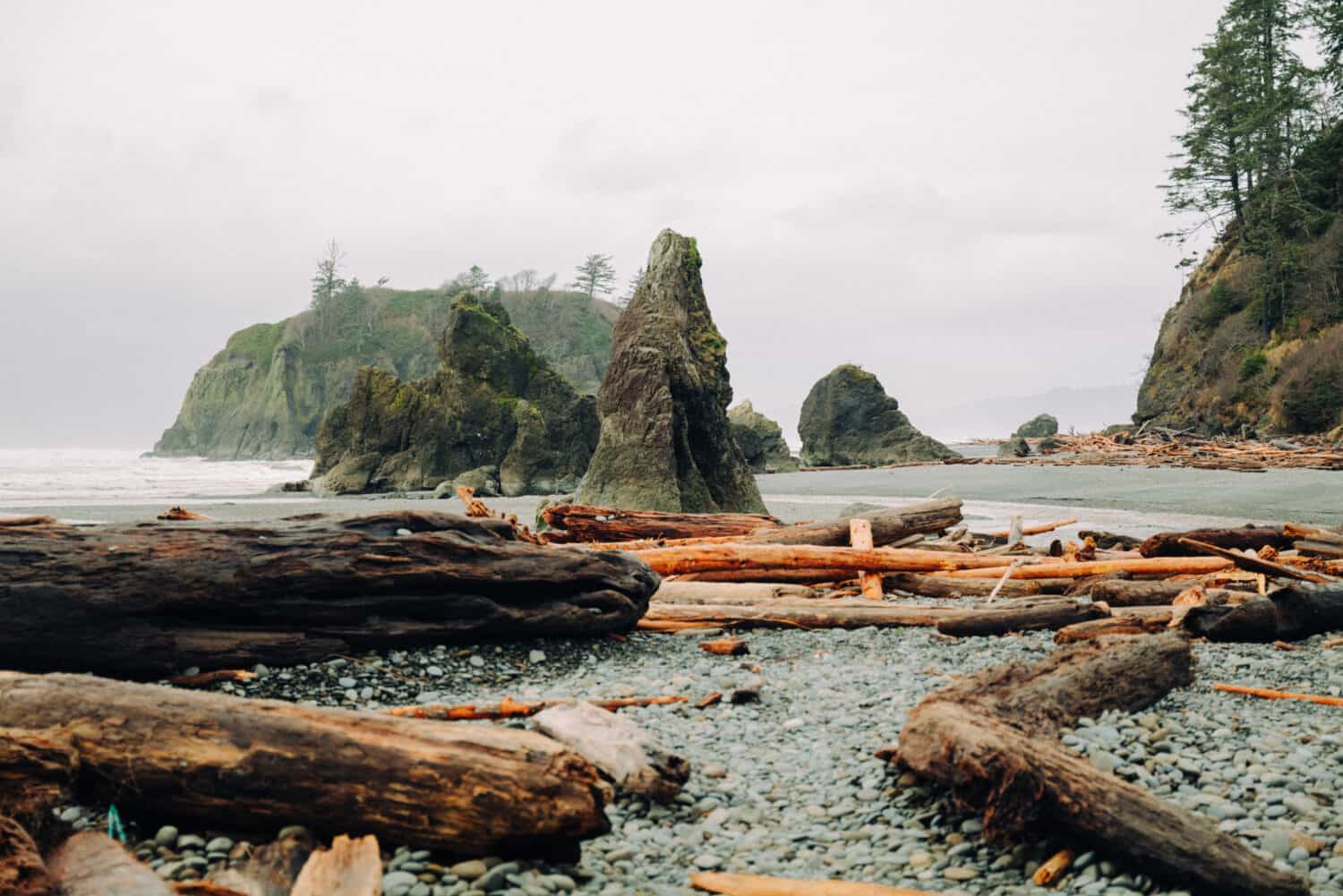
Similar to La Push Beaches, Ruby Beach is also a popular Olympic National Park beach to explore and has several beautiful rock formations.
It’s a very easy hike down to the water (and the Ruby Beach parking lot just got a face-lift in 2022! so if you’re looking for a great view for little to no effort, this is your beach.
To get the most out of your trip here, make sure to check these tide charts and schedule a visit during low tide.
14. Kalaloch Lodge and The Tree Of Life
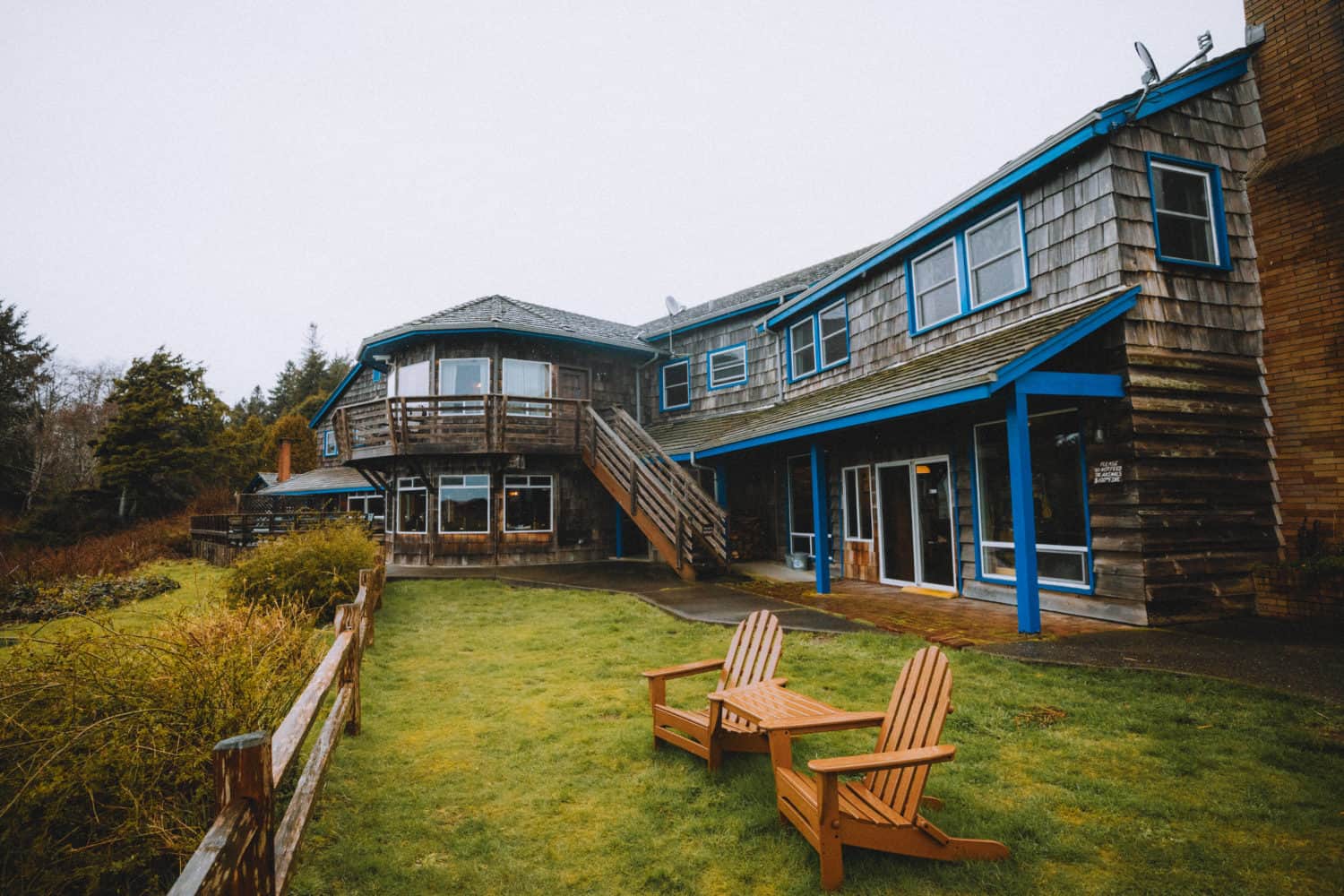
Centrally located down the Washington coast is a luxury spot to stay in the Olympic National Park!
Staying at Kalaloch Lodge is one of the most quintessential experiences to have in the Pacific Northwest.
In the main hotel, there are plenty of rooms with views of the tumultuous ocean beyond. There are also entire cabins for rent, with multiple rooms, a fireplace, and a kitchen to host the entire family.
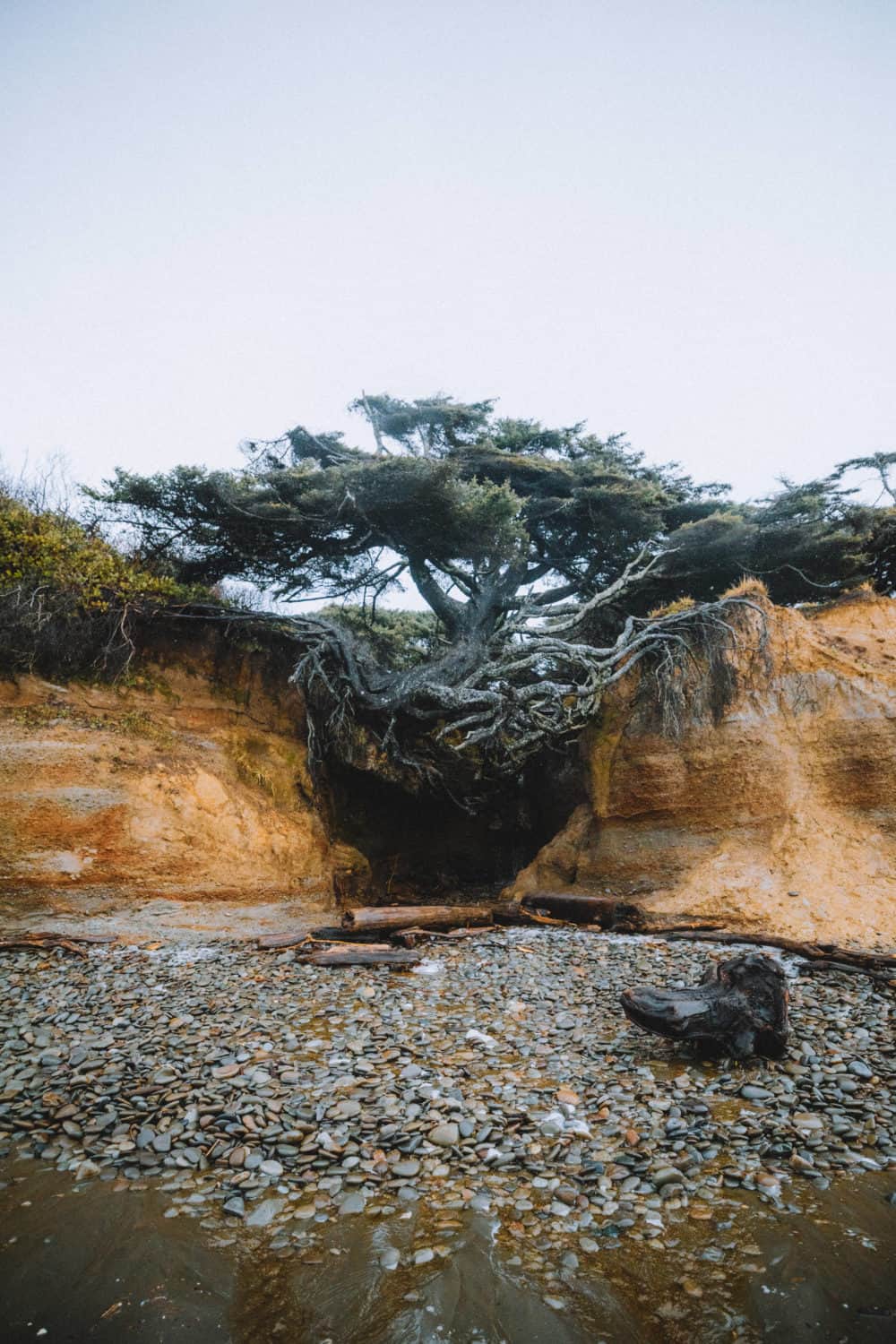
One of the best things to see on the Olympic Peninsula in this section is to see the Tree of Life. This is a tree that is positioned right below a washed-out cliff, barely hanging on the edges by its roots!
You can easily reach this area by driving a mile from the lodge and parking at the Kalaloch Campground day use area. Just take the stairs down to the beach and see it for yourself.
Read More: How To Spend 24 Hours At The Kalaloch Lodge and Tree Of Life
15. Hoh Rainforest – Hall of Mosses Trail
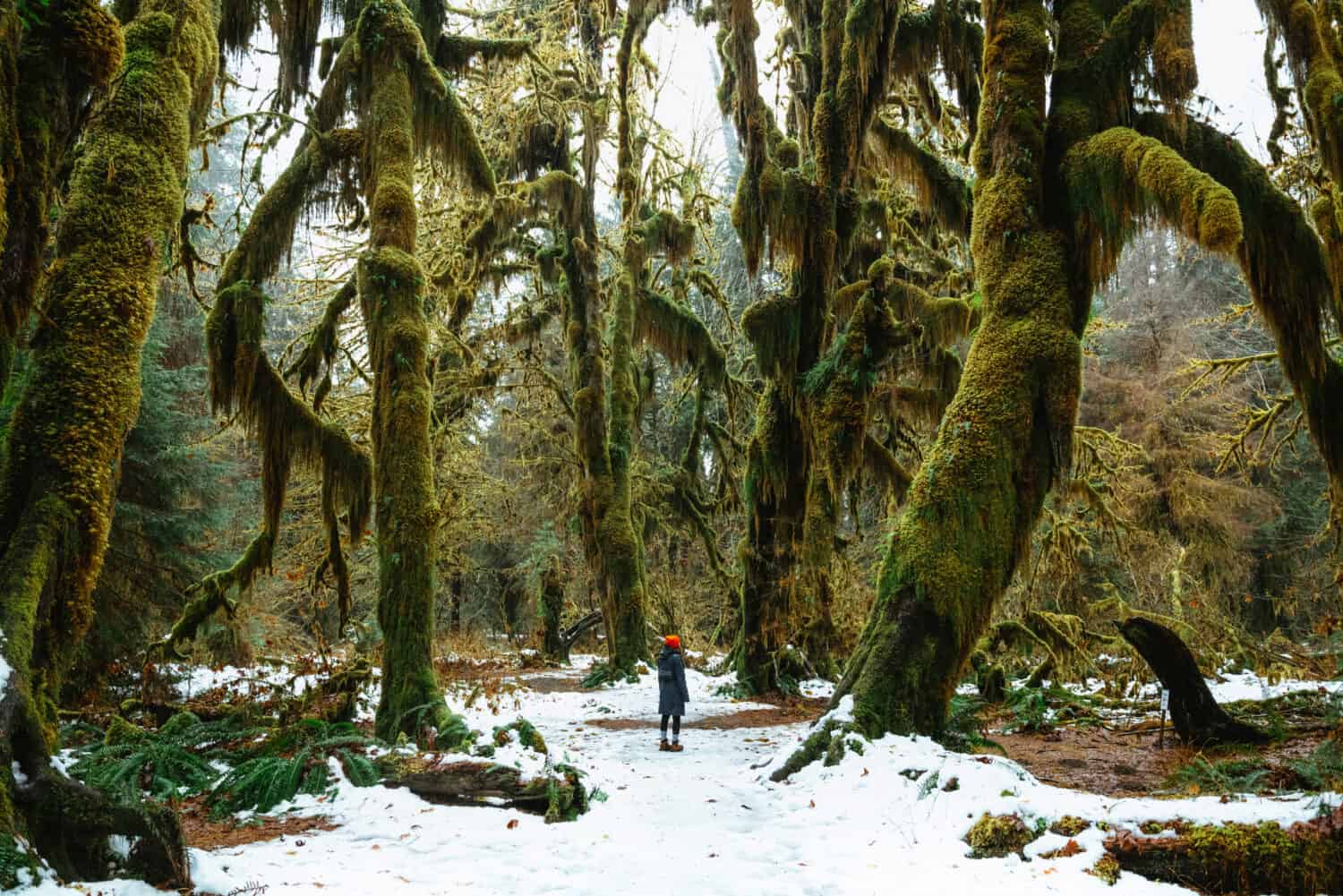
Out of all the destinations we list here, visiting the Hoh Rainforest is probably one of the most popular things to do in Olympic National Park.
Check out the Hall of Mosses Trail, an easy 1.1-mile loop that takes you to see some magnificent examples of native plants like moss, ferns, and fungi.
There are many trails here in this area, but if you are looking for an easy one (say with kids, or you just want a quick hike) this trail is definitely worth your time.
Spruce Nature Trail is also a great choice. It’s an easy 1.2-mile loop that showcases all the beautiful diversity of the Hoh Rainforest.
16. The Quinault Rainforest
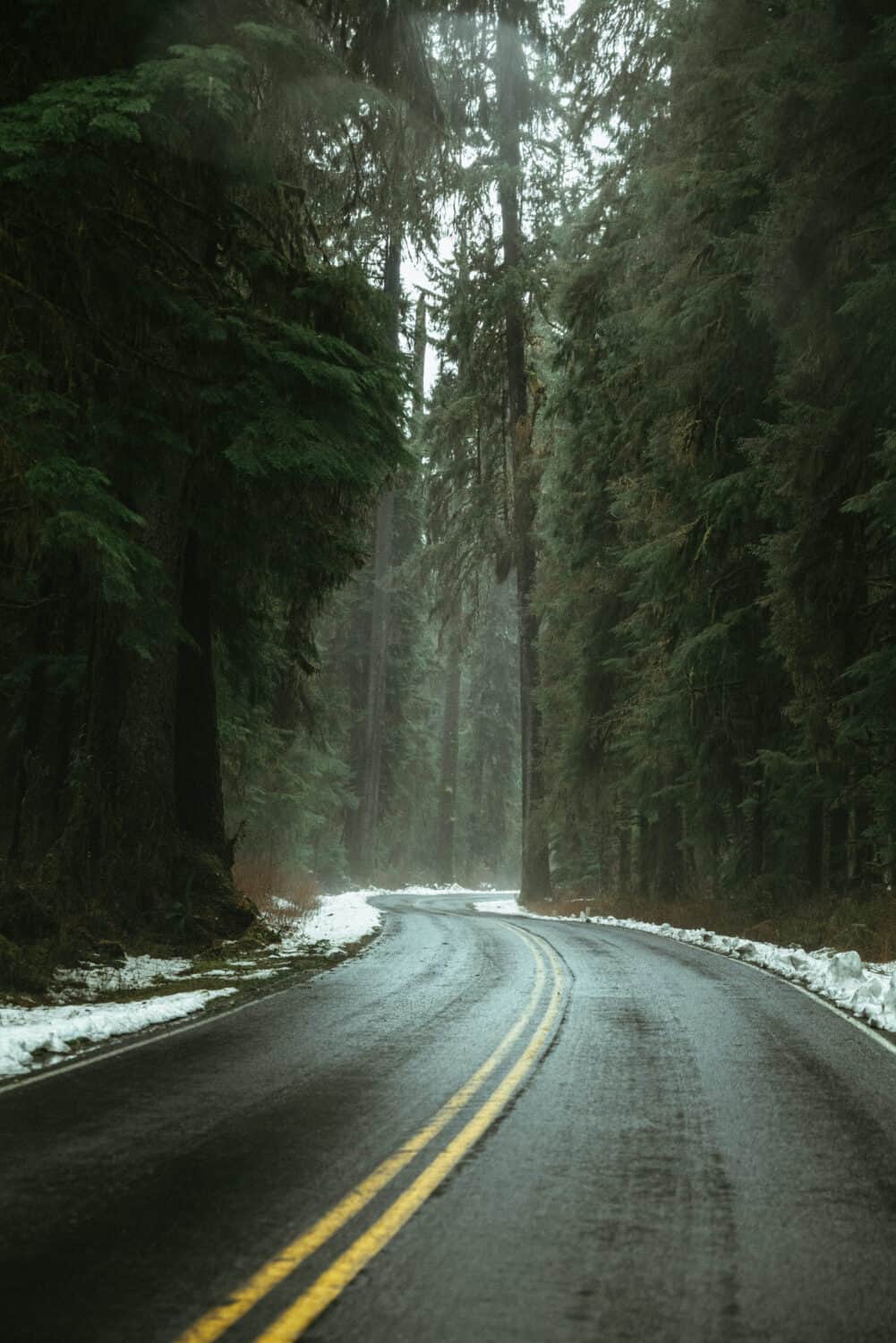
The Quinaunt Valley is located in the southwestern area of the park. It’s an hour south of Forks and about 2 hours from Port Angeles.
Here, you can capture the lush rainforest, jewel-colored lakes, and explore the wild core of the Olympic National Park.
Maple Glade Loop Trail is a great alternative to the Hall of Mosses if you are looking for a place with fewer crowds. This area is also a major beginning point for several overnight Washington backpacking trips.
17. The Staircase Area
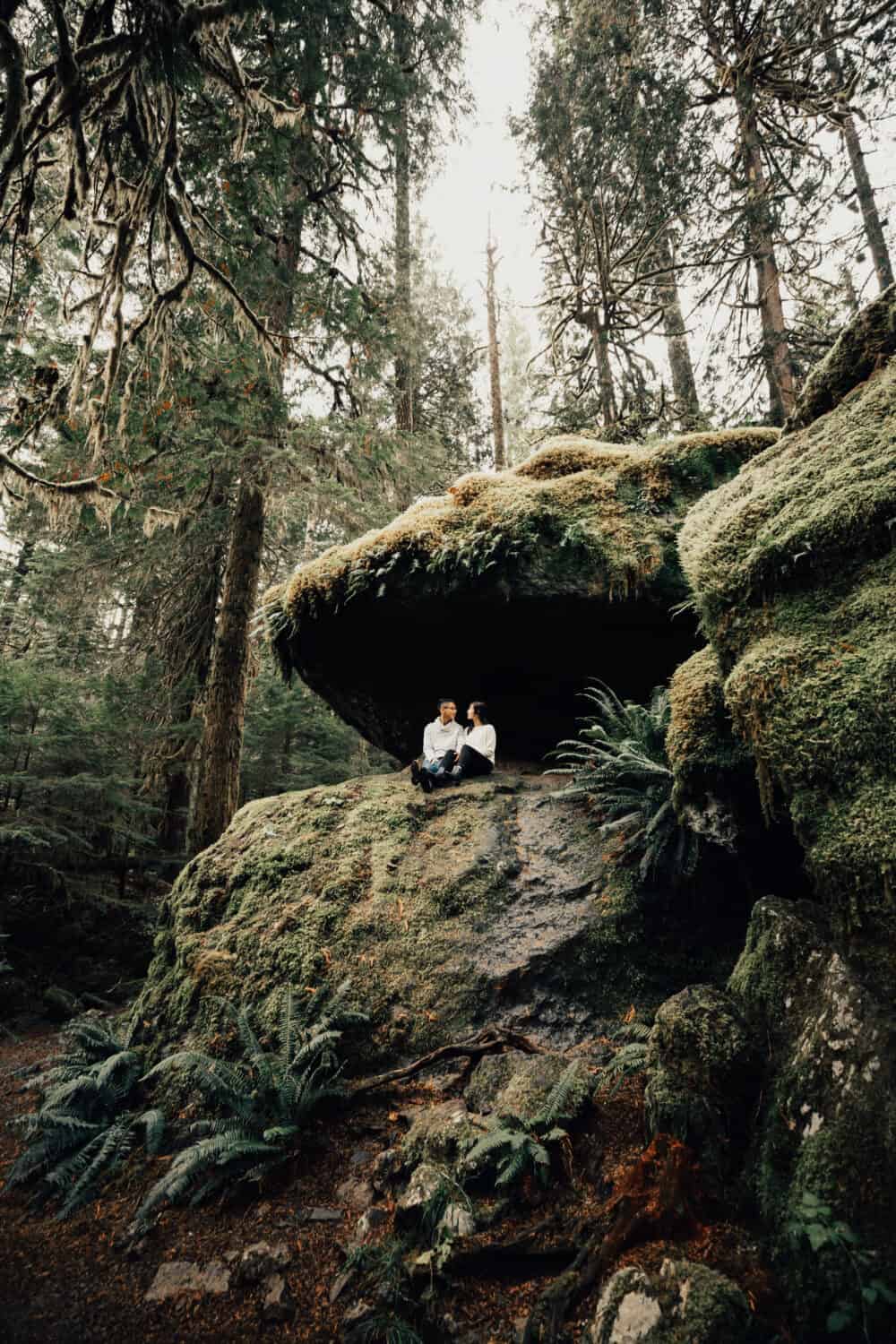
The Staircase Area is the southeastern section of the park, one of the least crowded and least visited areas.
Here, you will find the popular Lake Cushman, Lena Lake trail, and Staircase Rapids Trail that are brimming with Olympic National Park photography opportunities.
This section of the park has even more great examples of temperate rainforests, but with quite a few diverse trails to explore too.
If you are a fan of Washington hikes to alpine lakes, few crowds, and mountain views, this is your spots!
18. Lake Cushman
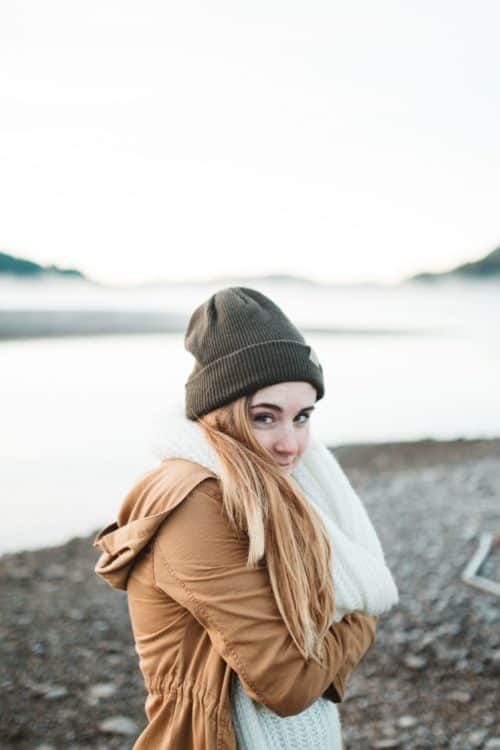
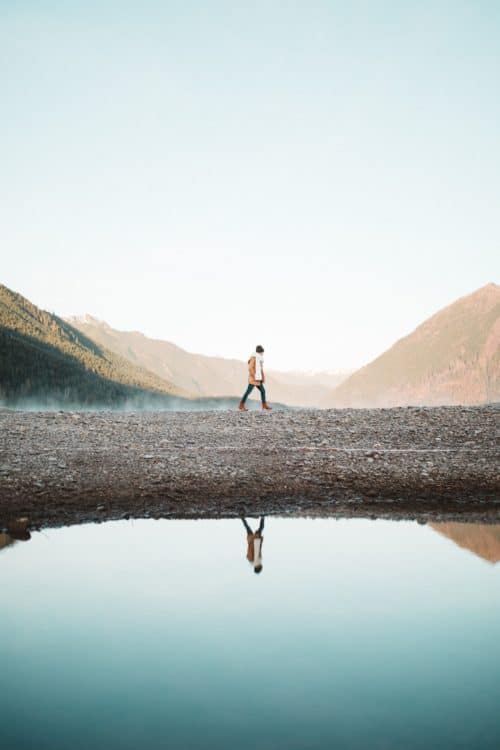
If you’re looking for some classic R&R, grab a picnic basket, a good book, and a lawn chair to come and hang out on Lake Cushman.
Being surrounded by so many trees and greenery, you’ll forget you’re only an hour away from Olympia!
Read More: The Ultimate Olympic Peninsula Road Trip
19. Ocean Shores, WA
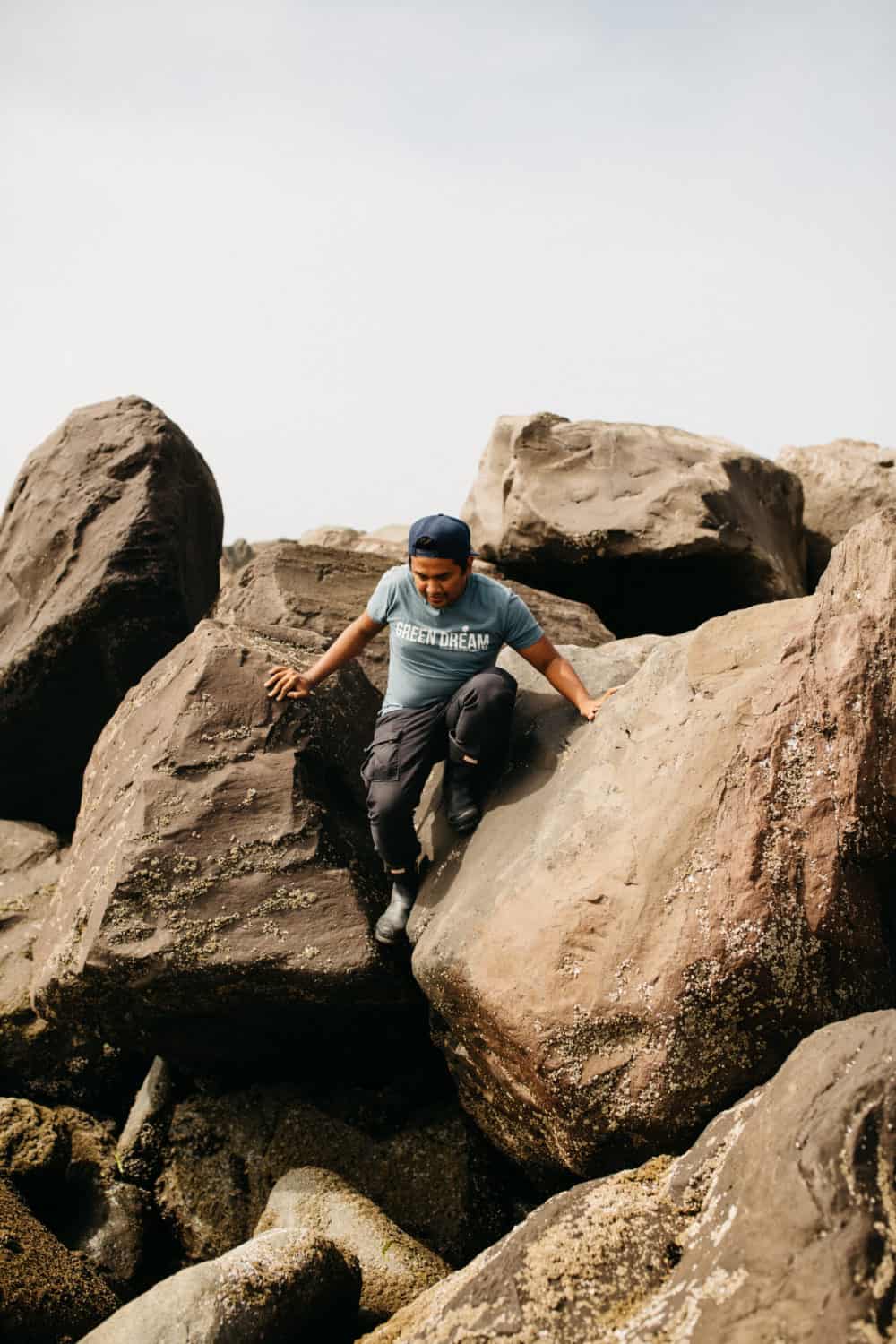
This little town on the coast of Washington is the perfect weekend getaway from Seattle.
It’s not in park, but an excellentplace to stop along your Olympic Naitonal Park photography tour nonetheness.
You can enjoy their miles of pristine beaches, explore the jetty, and maybe even see some sea lion pups on the shore!
Ocean Shores has a lot of activities as well, everything from riding mopeds on the beach to boogie boarding in the ocean to tasting their many delicious (and local!) seafood restaurants.
Map of Olympic National Park Photography Spots
Because there are so many places to see in the Olympic National Park, we put together a map!
Need a visual map of where everything is? Below, we’re sharing a map of our favorite things to see on the Olympic Peninsula so you can start planning your next adventure!
If you want to see everything all in one go, we’ve created the perfect Olympic Peninsula road trip route that takes you to everything! Click here to read the entire itinerary!
There are so many other beautiful Olympic National Park photography opportunities! Did we miss any of your favorite spots? Let us know in the comments below!
READ MORE PNW POSTS
All The Best Things To Do In Washington State
5 Essentials To Bring To The WA Coast
5 PNW Cities You Need to Visit
20 Energizing Hikes in the PNW
How To Spend 24 Hours in Vancouver, Canada
If you want more Pacific Northwest inspiration check out our PNW Pinterest Board!
